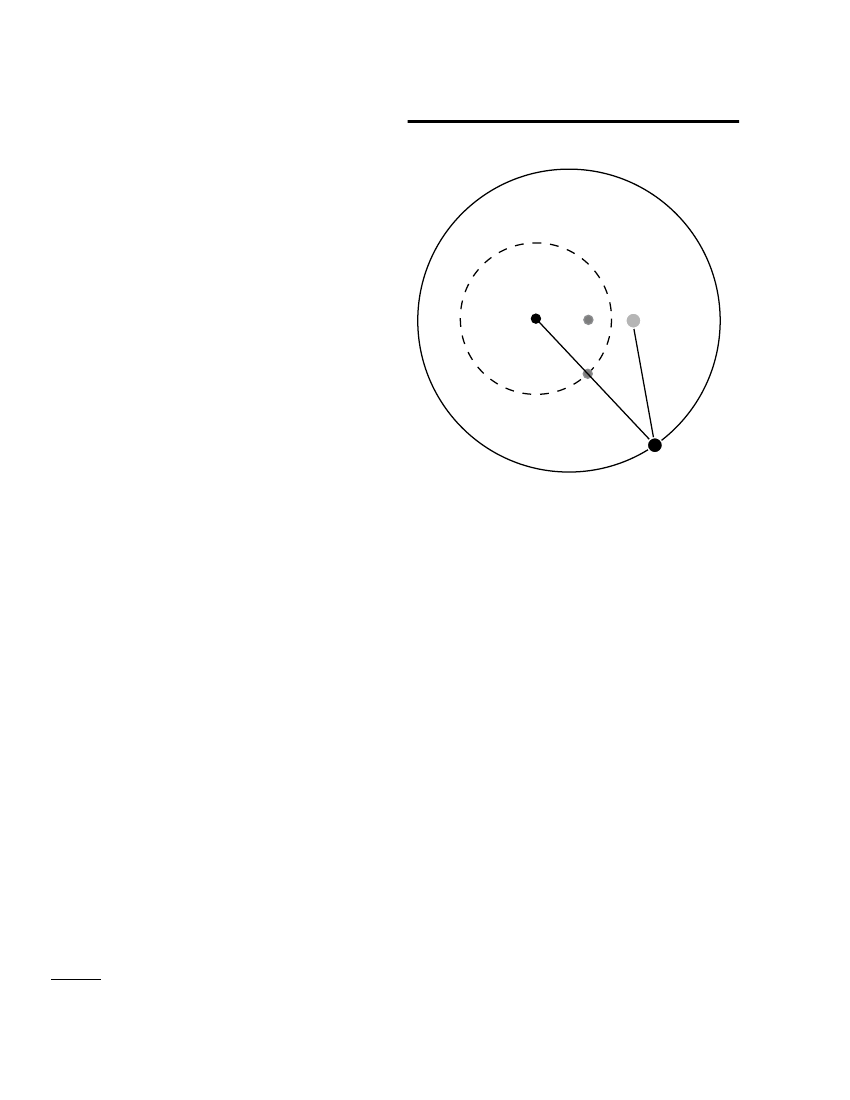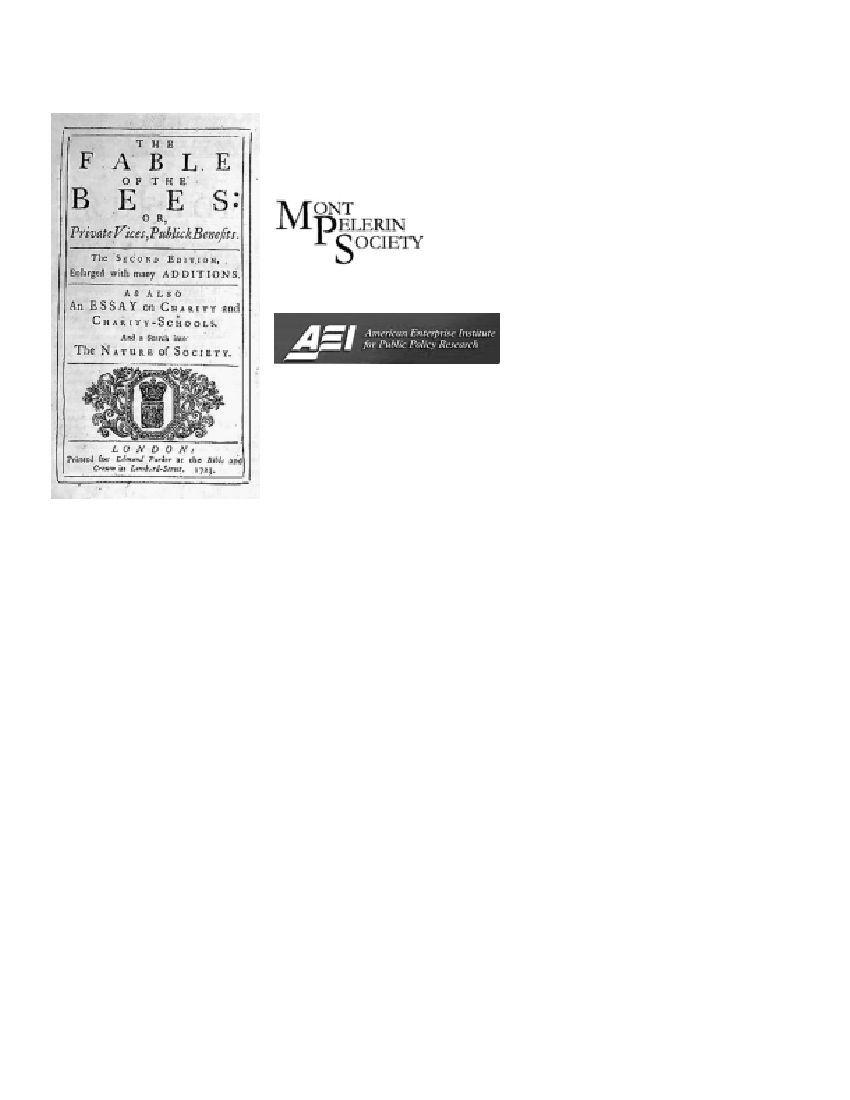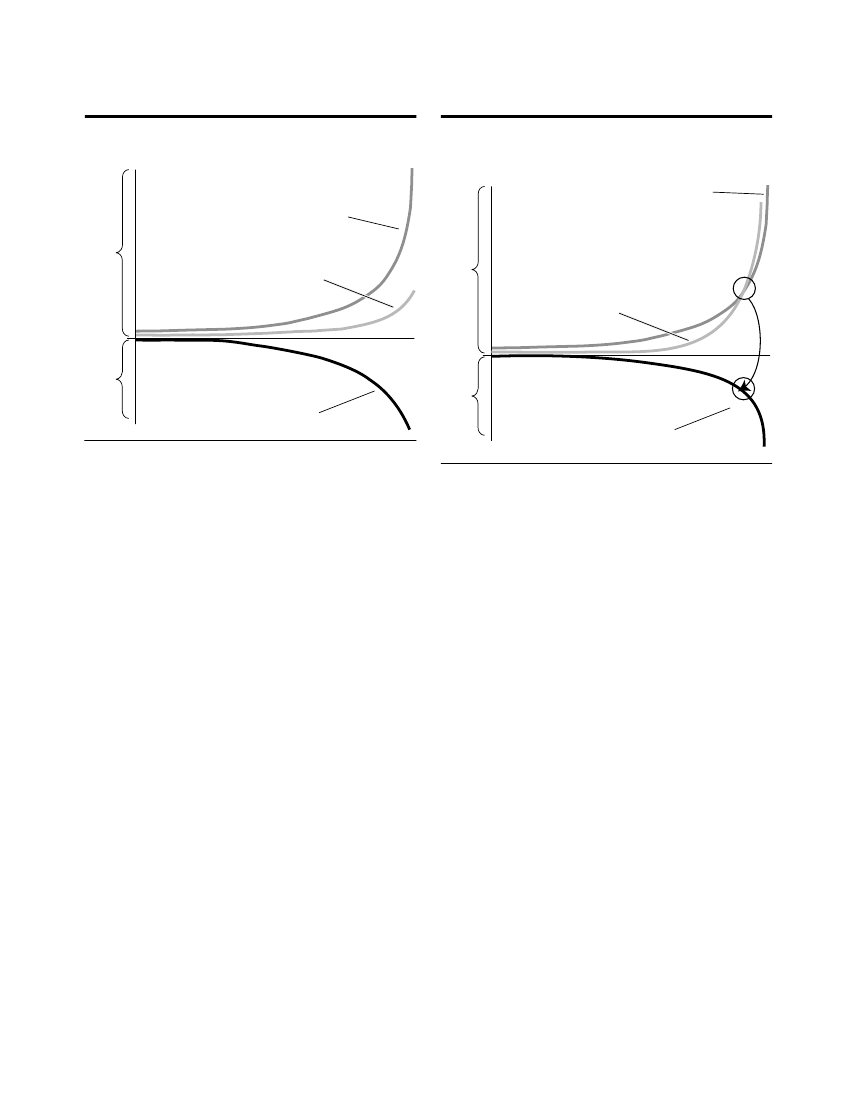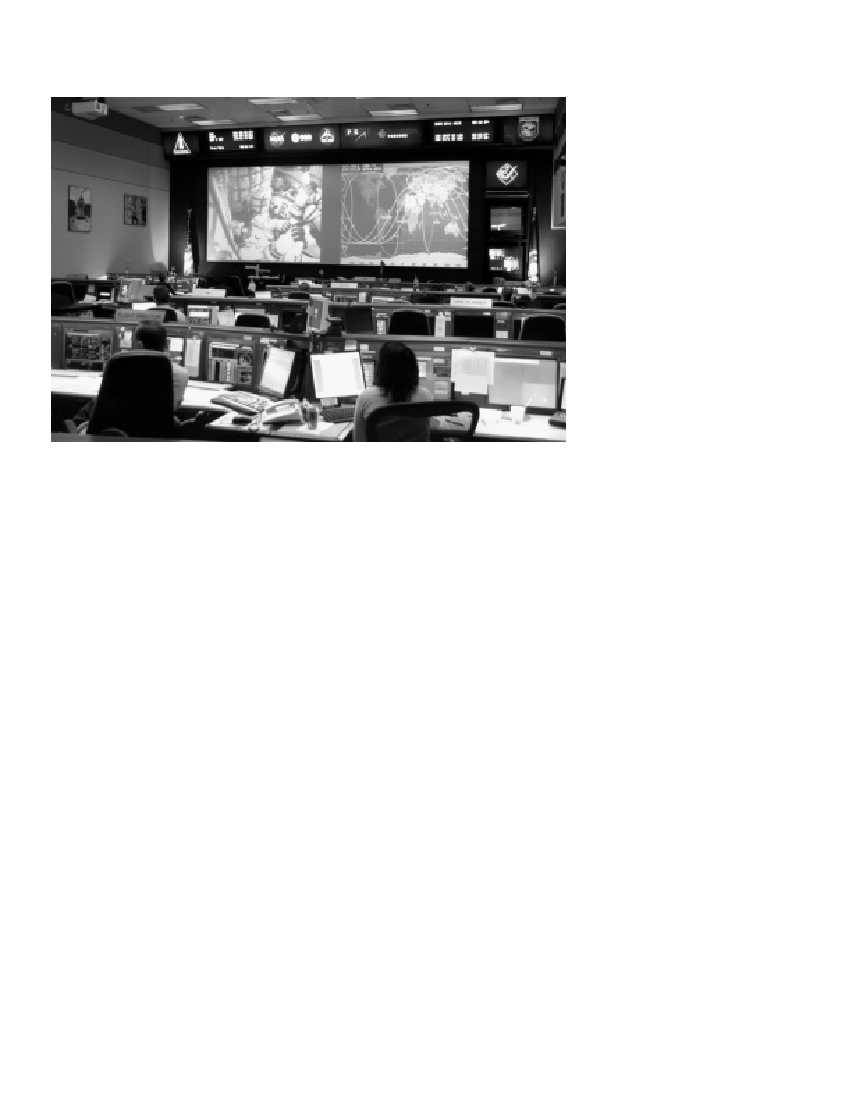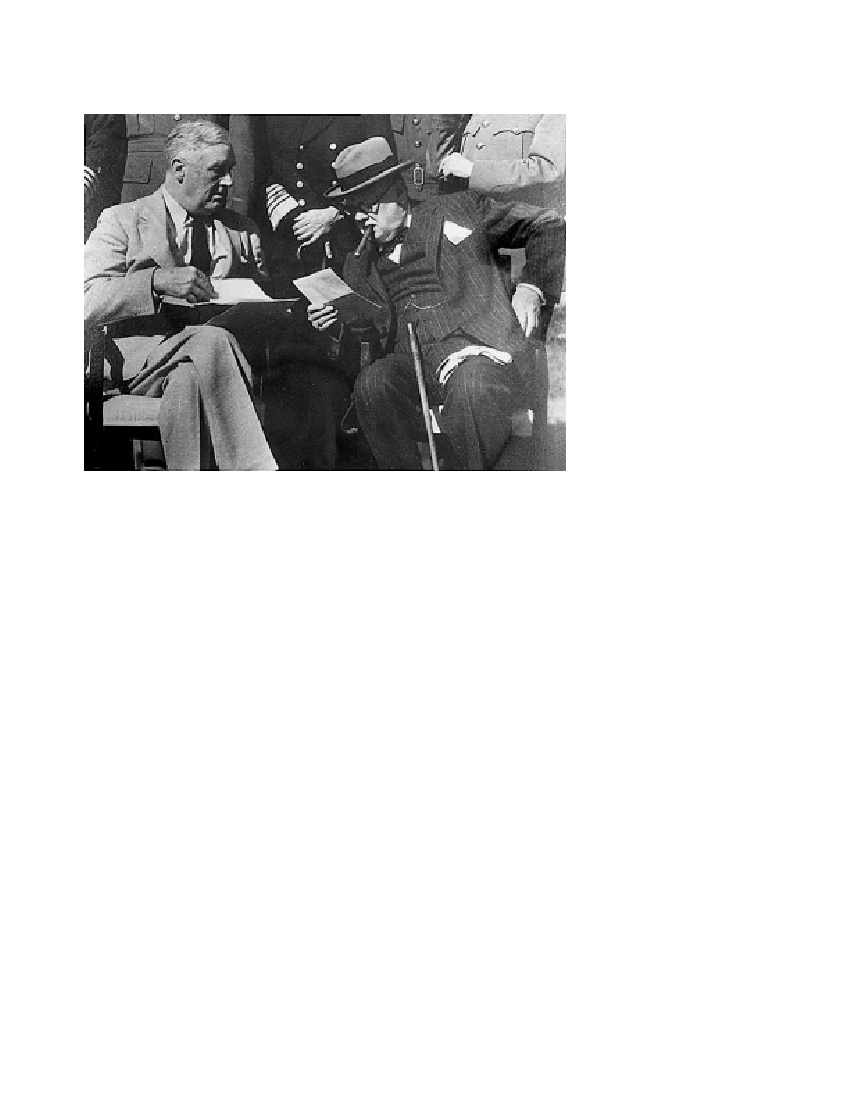Trafikudvalget 2006-07
TRU Alm.del Bilag 361
Offentligt
EIRFeature
WHAT THE CONGRESS NEEDS TO LEARN
The Lost Art ofThe Capital Budgetby Lyndon H. LaRouche, Jr.Dedicated, poetically, to my wife, Helga, for the omi-nously lovely occasion of our 29th Wedding Anni-versary.December 22, 2006Since that notorious uproar of 1968, which erupted in Europeas in the Americas, the mayfly passions of the upper twentypercentile of today’s reigning white collar (“Baby Boomer”)generation, are frequently expressed as a loss of the desire forthe practice of long-term marriages, a loss of caring for theprospects for younger generations, and a loss of any interestin investment in the future of the physical economy of othernations, or even their own. Hence, since that generation domi-nates our Senate and also much of our House of Representa-tives, our Congress had, in the main, lately misplaced thepivotal conception on which the future existence of our nationnow depends:the concept of the capital budget.This must now be changed.What has been lost, is a sense of the meaning of “indis-pensable capital investment in the physical conditions ofprogress”; it means a loss of the meaning of the investmentrequired, not only to rescue the U.S.A., but to secure thecivilized future existence of the world as a whole.Some among you are perhaps angered by my saying this?Think carefully. Witness the ration of members of the U.S.Congress who count every budgeted dollar of public expendi-ture as outlays which must be balanced by current tax receipts.From the standpoint of any competent economist, that policyis, in effect, the practice of ruinous, sheer, inhuman reckless-ness in economic policy of practice.4FeatureThe change in state of mind respecting economic policy,which had become widespread in the Congress during thecourse of the recent four decades, has become a radicalchange, a radical downturn from the level of competence ofthe founders of our Federal republic, a downturn of morethan a quarter-century, in what performance had formerlysuggested might be the apparent, functional intelligence-quo-tient of a majority of those leaders in senior positions. Thiswas an effect shaped, to a large degree, by the stratum, fromamong the typical university-oriented Baby Boomers of 1968,which had launched a virtual state of class warfare, warfareof white collar against blue collar. They were, more and more,against farmers, industrial operatives, and physical-science-based professionals. Many among them were even againstanything which represented technological progress in produc-tion and infrastructure. That cultural paradigm-shift ex-pressed by the 68ers, became the cultural matrix which hasdominated the downward shift in values over more than aquarter-century to date.So, we have generations which came to love digital com-puters, but chiefly as a source of entertainment; they lovedthe entertainment value of computers so much, that they de-manded the replacement of competent scientists, engineers,and machine-tool-design specialists, by the inherently uncre-ative idiot-machines composed to display the benchmarkers’intrinsic incompetence: we have seen, thus, the reckless useof computer technology for the attempted elimination of therole of the creative powers of the individual human mind ofthe design engineer in the world’s economy.Formal mathematics is not creativity; creativity isuniquely a sovereign quality of innovation specific to the po-EIRJanuary 12, 2007
Under the reign of the BabyBoomers, our Congress has“misplaced the vitalconception on which the futureexistence of our nation nowdepends: the concept of thecapital budget,” LaRouchewrites.EIRNS/Stuart Lewis
tentials for self-development of the individual human mind.It is a quality expressed, not by mathematics, but by the dis-coveries of universal physical principles, such as JohannesKepler’s uniquely original discovery of universal gravitation,as Albert Einstein emphasized this fact about Kepler’s andBernhard Riemann’s work. It is the individual creative mindin Classical art, as by Leonardo da Vinci, or Johann SebastianBach. The suppression of the emphasis on that kind of individ-ual creativity, produces a kind of society fairly described asan “Orwellian nightmare,” a “Brave New World” fantasy,like that produced by the psychotomimetic mind of anAldous Huxley.So, as in our Louisiana, that reigning generation of today,swapped productive development and its necessary basic eco-nomic infrastructure, for public revenues based on public sub-sidy of mass gambling; that generation built casinos, insteadof defenses against more or less inevitable hurricanes in thethree-to-five-scale range.That generation exported our industries to places abroadwhere labor was very cheap, and costs of basic economicinfrastructure were chiefly disregarded, thus bankrupting notonly more and more of our local communities, but also evenentire Federal states. In fact, this practice, sometimes called“outsourcing,” actually lowered the net physical productivity,per capita, of the world as a whole. More of the world’s netproductivity, per capita and per square kilometer, was actuallylost in North America and Europe, for example, than wasgained in Asia.11. This would be (perhaps, “will be”) evident in the chain-reaction effects ofa near-future collapse of the U.S. economy. A collapse of the U.S. economywould mean a collapse of the U.S. as an importer to the world, such as Asia.
Study our nation’s downward plunging physical condi-tion, county by county, since Richard Nixon was inauguratedas President. Produce animated chronological representationsof even the most common types of census figures compiledmore or less regularly by governments, or by standard privateagencies engaged in such economic studies. See the shift inemployment, from productive work-places, toward a virtually“Third World” quality of unskilled services. See the collapsein revenues of states and counties, county by county, overthese decades. This ruinous trend of the recent thirty-fiveyears, has not been an accident; it has been the product ofpolicy-decisions made in places like Wall Street and the Cityof London, and imposed, from such places, upon our Federaland state governments, This is the trend in policy-decisionswhich has now driven the nation into a state fairly described,at this moment, as a national economy teetering wildly on thebrink of an abyss.
Current Long-Range PolicyOver the past quarter-century, since President RichardNixon entered office, the trends in law-making and the politi-cal opinions among the upper twenty percentile of our BabyBoomer generation, have now bankrupted our nation. Thosehabits of opinion are, most unfortunately, the reigning popularopinion among that part of that generation’s legion of “cus-It would mean, also, a chain-reaction collapse of the planet’s whole monetary-financial system, unless a Franklin Roosevelt-style substitute were suppliedalmost immediately. The loss of net productivity through such chain-reactioneffects, in Asia, alone, would lower the net productive output, per capita,throughout the world. Thus, taking the world economy as a whole, over theinterval 1971-2006, the productive potential of the human species wouldhave shrunk, in net effect, over the course of this thirty-five-year interval.
EIR
January 12, 2007
Feature
5
functions whose existence dependsupon precisely those capital expendi-tures. By such foolish practices, suchmisguided legislators destroy the veryeconomy of the people whom they de-lude themselves into believing that theyare helping. That is precisely the way inwhich even those we might consider tobe among our many well-meaning legis-lators, have been destroying the U.S.economy, consistently, since early dur-ing the 1970s.Therefore, for this very practicalreason: from the standpoint of any com-petent historian, any competent scien-tist, any competent economist, thosecurrently popular Congressional poli-clipart.comcies of “balanced budgets,” are to beThe symbol of the 68er economy: gambling casinos on the Mississippi River, which wereseen as ruinous expressions of indoctri-built at the expense of the basic infrastructure required to protect against hurricanes.nated delusions which have unbalancedminds, a virtual product of the influenceof “social engineers” who designed thetomary voters” today. At the same time, the citizens in theaberrant mental habits induced from childhood on, in whatlower eighty percentile of family-income brackets, who havewe call our “Baby Boomers” today.been the typical victims of this drift, including the greaterFor certain reasons, I have a special responsibility, as annumber of those not “customary voters,” are, therefore, rathereconomist, for pointing out such presently ominous errors inangry now, and becoming more so with each passing, ruin-practice and belief to the members of our legislatures, and toous month.others. The relevant generation, and also others, have becomeBy and large, these guilty Baby Boomers did not intendso steeped in the cumulative effects of decades of indoctrina-to be malicious; excepting really evil cases in the likeness oftion in a system designed, in fact, to ruin our economy, thatBertrand Russell and H.G. Wells, and barring typical neo-they have come to believe that a bad performance of the econ-conservatives, our nation’s utopians rarely present them-omy, in response to this policy, could only be the failure toselves as being intentionally malicious. Our upper twentycontinue that policy more energetically, and therefore, in fact,percentile of the Baby-Boomer generation, were the children,with more ruinous effects. The fault lies, thus, chiefly, notborn chiefly between 1945 and 1956, born into a post-war fadin the legislator’s lack of sufficient information, but in thesometimes called the “White Collar” generation, or known aslegislator’s rejection of information which is seen as contrarythe 1950s age of “The Organization Man.” It was they whoto the beliefs which have been already ruining us over thewere groomed to make “the white-collar revolution,” not be-recent thirty-five and more years to date. Like the man whocause they knew what they were doing, but because, in theirpersists in attempting to impregnate a plastic dummy, theeyes, that is what they had been trained, almost as if they hadharder they believe, the more disgusting the results of theirbeen circus seals, to do.performance become.We have now entered a state of affairs, in which, evenSince the establishment of our Federal Republic, the fun-among the more respectable Democrats in the Senate, recentdamental Constitutional law of our nation had been set forthlegislation has driven the nation ever-deeper into a non-pro-as the Preamble of our Constitution. The promotion and de-ductive direction, and thus toward the brink of a most calami-fense of the security and general welfare of our republic, astous national bankruptcy. Meanwhile, the same legislatorsmuch or more for coming generations, as for the presentlyoften delude themselves that the practice of goodness is offer-living, is the principle to which all features of that Constitutioning palliatives of mercy to families which the Congress itselfare, and must be subordinated, including all amendments tohas actually ruined, as by its neglecting the defense of thethe Constitution introduced since the founding, and into fu-conditions needed for decent employment and for protectedture generations to come.pensions at decent levels of family income.It must be conceded, that we began as not only a weakThus, we hear the cry from such layers among our politi-nation, relative to the imperial power of the post-1763 Anglo-cians, that the U.S. government must not make capital expen-Dutch Liberal power based in Europe, but as victims of theditures, except by cutting the basis for the existence of thosericochet from the orchestration of the French Revolution by6FeatureEIRJanuary 12, 2007
´London’s assets Philippe Egalite and his accomplice, theJacques Necker who played a key part, with A.R. Turgot,in bankrupting France’s monarchy. We were, indirectly, thevictims of the effects of the Jacobin Terror, the effects of thewars of the Napoleonic tyranny, and of the merry countessesof the notorious Congress of Vienna.It was not until our republic’s victory over British LordPalmerston’s puppet, the Confederacy, that the U.S. became,and remained, in fact, a sovereign which could not be success-fully invaded by foreign powers, until the ruinous GeorgeW. Bush, Jr., Presidency. During most of the period sincePresident Lincoln’s assassination, and more so since the as-sassination of President William McKinley, there was a weak-ening of the Constitutional prescriptions for our Presidentialsystem, a weakening to which those assassinations contrib-uted much, and placed our foreign commerce and trade chieflyunder the overreaching domination of an Anglo-Dutch Lib-eral financier power, a foreign financial power which alsoreached deeply into our own domestic financial systems.We were only temporarily enriched by the looting, con-ducted by our principal debtors, the British and French finan-ciers, of a defeated World War I Germany; but, by the middleof the 1920s, our economy was already in the grip of whatwas soon to become evident as the 1929 Depression.We became truly sovereign again under President Frank-lin Roosevelt. Even Roosevelt’s political adversaries amongus were not able to challenge the Bretton Woods fixed-exchange-rate system effectively, until after the assassinationof President John F. Kennedy. We were undermined by theeffects of that latter and other assassinations, and, gradually,with the events of 1968 and the advent of the Nixon Adminis-tration, came the floating- exchange-rate dollar, and the othercapital follies which have ruined our physical economy, andlooted the lower eighty percentile of our families, more andmore deeply, during the subsequent thirty-five years to thepresent date.The most crucial, long-ranging fact about that 1763-2006span of our own and the world’s history, is that the AmericanSystem, as defined by the legacy of the Winthrops, Mathers,Logan, Benjamin Franklin, and the first administration ofPresident George Washington, is systemically antithetical tothe Anglo-Dutch Liberal system. Our Constitutional systemand that of the Anglo-Dutch Liberals, are not congruent sys-tems, but mortal adversaries, and have been so from February1763, to the present day.Not only did Adam Smith write what the short title of hiswriting callsThe Wealth of Nations;but, the purpose of thatpropaganda tract, as Smith himself declared, was to incite thecrushing of the forces of our Declaration of Independence.Smith was a plagiarist personally assigned, in 1763, by Brit-ain’s Lord Shelburne, to create schemes to ruin both the econ-omy of France and of the English colonies in post-1763North America.Smith was no genius, but more in the character of a caddis-EIRJanuary 12, 2007
fly larva, collecting pieces of flotsam from his surroundings,to build his pupal protective intellectual cocoon. As a plagia-rist, Smith relied chiefly on the pro-slavery dogmas of JohnLocke, the brayings of the Mont Pelerin Society’s franklypro-Satanic Anglo-Dutch Bernard Mandeville,2the doctrineof magic projected by the pro-feudalist fanatic Dr. Francois�Quesnay, and by that other notable Physiocrat, A.R. Turgot,from whom Smith plagiarized much of the most crucial tech-nical content of hisThe Wealth of Nations.From the beginning of our Constitutional republic, theconflict between our American System of political-economyand the system of monetarist usury known as the Venetian-like imperialist system of the Anglo-Dutch Liberals, has rep-resented the principal contending foes within the domain ofmodern world economy. The fact that we and the British havebeen sometimes allies, has never lessened the axiomatic-likedifference of species represented as these conflicting twosystems.The American System of political-economy, was, in prin-ciple, a continuation of that anti-feudalist system of societyfounded by the mid-Fifteenth-Century Council of Florence,and by the successive steps of establishment of the first mod-ern commonwealth forms of nation-states, in Louis XI’sFrance and Henry VII’s England, respectively. The policiesof the Plymouth settlement and the New England common-wealth of the Winthrops and Mathers, provided the modelbackground for what would become our Constitutional repub-lic about a century later. The revival of the efforts of thoseWinthrops and Mathers, during the course of the EighteenthCentury, came in the form of the influence of GottfriedLeibniz in shaping the social and economic thought of thoseadult youth around Benjamin Franklin and George Washing-ton, such as Treasury Secretary Alexander Hamilton, whofought the post-1763 struggle for our national sovereignty,and for the crafting of our Federal Constitution.32. Bernard Mandeville.The Fable of the Bees(London: Edmund Parker,1723, second ed.) A modern reprint can be found in a 1988 Oxford edition.3. The February 1763 Peace of Paris established the Anglo-Dutch Liberalsystem as the kernel of a virtual world-empire of a type modelled on themedieval system of partnership of the Venetian financier-oligarchy and thebutchering anti-Semites and Moslem-haters known as the Norman chivalry.In a meaningful sense, when the Venetian financier-oligarchy lost its abilityto function as a maritime power based in the Adriatic, during the fourthquarter of the Seventeenth Century, those Venetians following the pathway ofPaolo Sarpi, moved north, to maritime bases in England and the old Hanseaticregion from Netherlands to the Baltic. This system of Sarpi and his followers,has been known asliberalismto the present day. This is contrary to childishlyRomantic images of a British empire as the product of a monarchy; thatmonarchy, since William of Orange, but, most emphatically, since 1714, isan always potentially expendable instrument of a slime-mold-like socialformation, represented by collaborating and competing financier-oligarchsin the tradition of medieval bankers such as Lucca’s House of Bardi. Theidea of “globalization” as a liquidation of the existence of the institution ofthe modern nation-state republic, is an explicit copy, in intent, of the medievalsystem which crashed into a New Dark Age during the middle of the Four-teenth Century.
Feature
7
The ontological difference betweenFIGURE 1the two rival systems, the AmericanFrom a Productive Economy to a Services Economy
System versus the Anglo-Dutch Liberalsystem, is that the Anglo-Dutch Liberalsystem is based on the monetarist princi-ple of usury, whereas the American Sys-tem of political-economy has beenpremised, from the start, on whatLeibniz defined as the principles ofphysical economy.Admittedly, both we rivals each em-ploy monetary systems. The functionaldifference is, that our Constitutionalsystem uses, and regulates the monetaryprocess according to the intention to re-alize those purposes which are identi-fied by the Preamble of our Federal Con-stitution. The Anglo-Dutch Liberalsystem, otherwise known as the Britishsystem of attempted global imperialism,Over 35% Gainis a system designed and managed by10-35% Gainfinancier-oligarchical predators in theNo Changespecific interest of usury as such. John10-25% LossLocke, Bernard Mandeville, Adam25-40% LossSmith, Jeremy Bentham, and the Hai-40-60% Lossleybury School generally, are typicalexpressions of the modern Liberal’smonetarist system of usury.Source:EIRNS.The recovery of the U.S.A. from theIn the past three decades, the U.S. economy has been decoupled from the Americandisaster crafted under the leadership ofSystem of political-economy, and has devolved into the services economy promoted by thePresident Calvin Coolidge and AndrewAnglo-Dutch Liberal system. This devolution can be seen here on a county-by-countyMellon’s Herbert Hoover, was accom-basis for the former industrial state of Ohio.plished by President Franklin Roose-velt’s dumping of the pro-fascist WallStreet gang’s nearly fatal adherence to the British “free trade”defines a Hobbesian system of each in war against all. Thesystem. Roosevelt launched a return to the American Systemcharacteristic of the Hobbesian beast-man, is the Anglo-of political-economy implicit in our Federal Constitution’sDutch Liberal misdefinition of “human nature,” which is, inPreamble.fact, man as beast to man. The American System insists thatthe money system itself be managed to prevent the evils of theThe Strategic Conflict As SuchAnglo-Dutch Liberal and similarly predatory systems fromThe conflict between the two leading systems of today’soperating in our republic, or in our relations with other sover-world, the Anglo-Dutch Liberal versus the American Systemeign nations, as the policies of President Franklin Rooseveltof political-economy, can be summed up, in effect, as follows.expressed this excellent distinction. (SeeFigure 1.)The Anglo-Dutch Liberal system, as the Mont PelerinThus, our national goal, at least the national goal of ourSociety typifies that alien penetration (perhaps we should say,intelligent and informed patriots, is to promote the increased“rape”) of our nation, demands “free trade,” which means theproduction of physical wealth per capita and per square kilo-unhampered reign of the usury practiced by slime-mold-likemeter. This, those of us who understand economy agree,clusters of financier bandits. This predatory onslaught is typi-means fostering scientific and Classical cultural modes offied in the extreme, by the pack of hyenas called “hedgeprogress in the development of the community and the indi-funds.”vidual person. This promotion of the improvement of theThe American System of political-economy, definescondition of the individual, depends upon utilizing the discov-money as our Federal Constitutional system does, as a monop-ery of higher principles in ways which increase the productiveoly of the Federal government. Whereas, the Anglo-Dutchpowers of labor per capita and per square kilometer. On thisLiberal system’s commitment to monetarists’ “free trade,”account, intelligent patriots prefer to promote the reinvest-
1990
Nearly50% ofOhio mfgis gone.
2003
8
Feature
EIR
January 12, 2007
ment of retained earnings in the form of the technologicallyphysical advancement of products and productivity, prefera-bly as closely held enterprises under creative leadership,within local communities, as much as in the economy as awhole.In approximation, this means constantly watching theshifts in productivity and standard of living in county or multi-county area. It means emphasizing the importance of growthof physical output per capita and per square kilometer in eachsuch area. It means promoting physical production in agricul-ture, manufacturing, and related research and development,as primary. That primary emphasis requires a continually im-proving standard of intellectual and social life. The nation isthen united by the development of the common means ofconnecting and coordinating these communities into a dy-namic whole, that in the sense of Leibniz’s definition ofdy-namics,as distinct from Cartesian-like, mechanistic-statistical ways of thinking.Thus, for intelligent economists, reinvested earnings tothis purpose and effect, should be taxed at a considerablylower rate than conspicuous consumption and runaway profitssteered into financial speculation.All in all, the system of regulation, creating a “fair trade”standard of practice, rather than the intrinsically ruinous “freetrade” standard, must be reinstituted, as the “fair trade” stan-dard was approached under President Franklin Roosevelt.This return to a “fair trade” standard would reverse the ruinouseffects which the rampage of pro-monetarist deregulation hasunleashed upon our poor, and now very, very poor nation, asthis rampage was begun, already, during the 1970s. Scrap theso-called Liberal reforms of the 1970-2006 interval; they haveproven themselves a monstrous failure.Now, in this report, we shall first consider those points ofnatural forms of constitutional law, as just broadly identified,from a national standpoint. We shall then consider the appli-cation of the indicated principles of dynamics to solve thecrisis within the U.S. domestic economy. After that, we shallapply that to the field of international relations.Thus, to reach the proverbial bottom line for whathas been written above, the strategic situation we face isthe following.
Courtesy of Nuclear Energy Institute
“[P]rogress in the discovery of the application of the principles ofphysical science, such as nuclear and thermonuclear science, . . .expresses the true nature of mankind’s powers and assignedmission within this universe.” Here, President Eisenhowersymbolically starts up the first U.S. commercial nuclear powerplant at Shippingport, Pa., in 1954.
1. Science: Redeeming OurHeathen NationOn the surface, a capital budget appears to be a straightfor-ward proposition in cost and financial accounting. However,the principles which underlie any competent design of thatbudget, are profoundly scientific, rather than ordinary expres-sions of financial and related accounting. This scientific com-plexity is therefore unavoidable; whereas, allocating a pro-grammed loan is a relatively simple statement inEIRJanuary 12, 2007
mathematics, the principles which predetermine whether ornot the expenditure will work out as intended, are, as I shallshow here, at a later point, a much deeper matter of the actualscience ofdynamicsthan any customary accounting practiceis able to accomplish. Therefore, to design a competent capitalbudget, is a challenge in the domain of physical science, ratherthan mere accounting. Moreover, the choice of the kind ofphysical-science practice needed, requires close attention tothe special set of underlying assumptions which are specificto the relevant behavioral characteristics of the human mind.Experience with the discussions of economic policywhich appear from within, or around the functions of shapingand assessing the performance of the policies of government,shows us that most of the hoaxes into which our law-makingprocesses have become entrapped, such as the Enron swindleand related phenomena, recall the case of the embittered wifetelling the children, “You will not eat this week; your father,again, lost his week’s pay in the gambling house which lurkson his way home from work.” Such is the “fools’ gold” do-Feature9
main of gambling, the set of shadyschemes known by such names as“financial derivatives” and “hedgefunds.”Therefore, this chapter of the re-port, will focus attention on the na-ture of the essential, underlying as-sumptions to be considered. Thatsaid, we now proceed as follows.Americans of today are mostlyheathen; that is to say, even most ofthose who avow a belief in God, donot actually believe in that Creatorpresented inGenesis1, who mademan and woman in the likeness ofHimself. When you speak the wordJohn WinthropIncrease Mather“God,” most do not react by thinkingof the living Creator of what the greatand good Albert Einstein describedas a finite but boundless universe inwhich we dwell. In practice, most,even still today, prefer a deity morein the nature of the evil OlympianZeus of the poet Aeschylus’Prome-theus Bound.Most tend to believein what such children of Paolo Sarpias Thomas Hobbes did; they believein the doctrine of that Satanic Iago ofVerdi’s operaOthello,the Iago whospeaks of the cruel and evil, Hobbes-ian god he serves.4That Zeus typifies a terrible op-pressor who commands the perpetualLibrary of Congresstorture of the Prometheus who hadShakespeare’s IagoCotton Matheroffended Olympus by giving theIn contrast to the Satanic Iago in Shakespeare’s “Othello,” the founding fathers of theknowledge of the use of fire, such asPlymouth Colony, the Mathers and the Winthrops, believed that man’s mission in life was todo good and improve mankind. Here, the 19th-Century American actor Edwin Booth portraysnuclear-fission power, to mankind.Iago.Whereas, in fact, contrary to bothT.H. Huxley and the Frederick Eng-els of Huxley’s time, the human be-ing is no monkey, no mere ape, but a creative being madeit is expressed as progress in the discovery and applicationwith the built-in potential to be creative, contrary to the cruelof the principles of physical science, such as nuclear andlaw of Zeus; the human being is a person in the likeness ofthermonuclear science. It expresses the true nature of man-the Creator.kind’s powers and assigned missions within this universe.This is not fable; it is history. It is also theology. It is alsoThis is a creativity we recognize as spiritual, saying this tophysical science. It is the essence of any competent teachingsignify that it inhabits the living flesh, but that it is of aand practice of modern economics.higher ontological quality of fully efficient being, higherFor us who know the truth about mankind, the humanthan that of a mere animal which we might eat as food. Ourmind is distinguished from the characteristics of all beasts.mortal human body is the host, and servant, from conception,This distinction is expressed as the human individual’s beingof something which is so defined as the personal spiritualcreative by virtue of the unique nature of his living species;being which possesses the power of true creativity. This isthe mission which the Creator assigns to mankind, to assist inthe continuing work of universal, intrinsically,ontologically4. This soliloquy appears, in the second version of the opera, as a modificationmade by Verdi, at the prompting of Boito.anti-entropiccreation.10FeatureEIRJanuary 12, 2007
There are those confused and contrary fellows, who mayworship the Sun, but hate the processes of nuclear and thermo-nuclear fusion on which the existence of our Solar Systemdepends. Such unfortunates express that Luddite-like strainof perversity which has become typical of much of the ranksof Baby Boomers of the Americas and Europe, a perversitywhich has contributed greatly to the suffering rampant aroundour nation, and the planet today.5The superstitious gnostic believes in a static, not adeveloping universe. He or she misdefines the universe,accordingly, as a universe whose process of perfection hasbeen ended. For the gnostic heathen of this persuasion,everything is now predictable, and, for him, all that willexist is, therefore, virtually inevitable. That deluded gnostic,therefore believes, that since, in the gnostic’s opinion, Godmust have created a perfect universe, even God Himselfhas thus eliminated His own capacity to modify the universethereafter. As the beloved Philo of Alexandria and othershave warned, implicitly, Satan, according to the Delphicgnostic, accepted no such lawful, principled restriction;thus affording a license given to Satan’s faithful by theimplicitly entropic, statistical laws, false laws which, liketoday’s implicitly Satanic hedge funds, were assumed tofetter the Will of the Creator. Those who place trust inSatan’s power, so, are great fools.Contrary to the brutish fatalism of such gnostics as those:in fact, as the evolution of the Solar System from a solitary,fast-spinning young Sun attests, it is an instance of the princi-ple of continuing, anti-entropic creation, rather than a fixed,entropic universe. The Creator’s always developing, alwaysfinite, but unbounded universe, is a process—anintrinsicallyanti-entropic process—ofcontinuing creation, a process ofCreation which it is mankind’s function and duty to assist.So, we now move outward to Mars and beyond, to improvethe management and development of what we discover outthere. Science shows us that the Creator is a perfectly creative,outgoing Being, governing a permanent reign of unending,anti-entropic creation. Consequently, our assigned duty is toperform the universal missions which that commitment bythe Creator implies for us.Our comprehension of these and related matters, has beenassisted notably by the work of Russia’s Academician V.I.
Vernadsky’s development of the proof of the distinctionamong three phase-space domains: the non-living, the Bio-�sphere, and the Noosphere. These three, dynamically inter-twined phase-space domains, and the principles which theyexpress, reflect the following considerations implicit in theproofs supplied by Vernadsky, and also by others supportingthe principal relevant discoveries.As Vernadsky sums up the evidence for living systems,as during 1935-1936, although the chemical elements partici-pating in living processes, are taken from the same domain asnon-living materials, the living processes associated with theBiosphere, express a principled quality ofspecifically dy-namicorganization of a process which, otherwise, does notappear within the domain of non-living processes as such.Similarly, the processes of society employ the materials ofthe abiotic and Biospheric domains, but are organized by adynamicform of principle of efficient intelligence which doesnot appear in any lower order of living processes.I repeat: the empirical evidence proving the latter distinc-tion, defines a principle of intelligence not found in the biol-ogy we associate with lower forms of life than the humanindividual personality. It is this higher quality of efficientintelligence, which distinguishes the Creator and the humanindividual ontologically from the beasts, which lack that qual-ity of efficiently creative intelligence.This quality of intelligence is mankind’s nature, and hisand her mission, asGenesis1 stipulates in its own terms. Thisis the proper refinement of our understanding of the greatprinciple lodged within the Preamble of our Federal Constitu-tion.Mankind’s duty is not to adapt to the universe as wefind it, but to improve it in a distinctly anti-entropic way.Itis to be the agent, the instrument of the Creator, in this fashion.Our mission is to improve mankind, and the individual mem-ber of our species. This is a principled mission assigned toeach of us, the mission of contributing to the improvementof the human condition on this account, and to defend theprinciple of anti-entropic progress so that we do not retreat toa poorer condition of mankind’s existence and role, than wasachieved before us.
Reason vs. ‘Logic’What we have considered in this chapter thus far, mustalso be restated as revealing the essential nature of the conflictbetween reason and science, on the one side, and formal logic,on the other. This is otherwise known as the great principlewhich the successor of Leibniz, of Carl F. Gauss, and of Le-jeune Dirichlet, Bernhard Riemann, presents in his ground-�breaking, 1854, Gottingen habilitation dissertation,on thesubject of the hypotheses which underlie geometry.From thestarting-point embodied in that dissertation, as continuedthrough such later works as his treatment of Abelian func-tions, and his defining of the dynamics of physical hypergeo-metries, Riemann lays the basis for conquering the greatestmysteries which had usually befuddled the study of political-Feature11
5. On the subject of conception of the human individual, the folly of the so-called “fundamentalist” is that he, or she, thinks like a Cartesian, viewingindividuals as like particles bombarding one another in a gas system. Theexistence of living systems is never kinetic, but always dynamic in the senseof the term “dynamic” as encountered in the work of the Pythagoreans, Plato,and Gottfried Leibniz. Society must be designed to promote the conditionsof human life. We can not change a bad society into a good society, simplyone on one; we must change the axiomatic design of the society as a whole,just as the U.S. Constitutional system is morally superior to any of the relicsof feudal tradition in Europe, even still today. To promote human life, youmust efficiently promote scientific and related creativity as the constitutionalprinciple of lawfulness on which the society’s function is premised.
EIR
January 12, 2007
Jeanne d’Arctriumphed over atortured death atthe hands of thebrutish Englishchivalry. “Thecitizen must beassisted to see hisor her mortal life interms of thesignificance whichthat brief span ofpersonal life has forgenerations earlierand later.”EIRNS
economy earlier.6The usual, modern university student of today, graduatesin virtual ignorance of the fact that the true principles ofgeometry and physical science, associated with the name ofSphaerics,were established under the Pythagoreans and theschool of Plato, before the production of the Sophist doc-trines of Euclid’sElements.These great ancient principlesof Plato and others were reestablished as modern sciencethrough the fundamental discoveries of such followers ofthe Renaissance’s Cardinal Nicholas of Cusa as Leonardoda Vinci, Johannes Kepler, and their followers, such asPierre de Fermat, Leibniz, Gauss, Dirichlet, and Riemann,all before the process of development within the life-longwork of Albert Einstein. Riemann’s 1854 habilitation disser-tation, thus opened the door to Riemann’s own founding ofthe notions of thosedynamicsof physical hypergeometrieson which the conceptual framework of a competent moderneconomic science, as a body of physical science, as to princi-
6. Late during his life, as at the Princeton Institute, in the company of KurtGodel, Einstein gave further elaboration of the argument he made against the�reductionist sophistries of the celebrated 1920s scientific conferences. Heemphasized that the heart of the achievements of modern physical sciencewas lodged between the book-ends of the fundamental contributions of Jo-hannes Kepler and Bernhard Riemann. Godel’s famous 1930 demonstration�of the absurdity of the fundamental premise of Bertrand Russell’sPrincipiaMathematica(for which the virtually autistic John von Neumann and hiskind never really forgave Godel), points toward the relevant affinities of�Einstein and Godel. The conception of dynamics reflected in the development�of Einstein’s thinking, and the view of the principle of dynamics embodiedin the work of Academician V.I. Vernadsky, are the key to the practicalmastery of economics as a department of anti-entropic physical science today.The distinction between merely formal, and actually physical hypergeomet-ries, is crucial for any representation of Riemann’s work.
ple, depends today.7However, the root of all this can be traced to precedentsakin in intent to the referenced definition of the nature of manand woman encountered withinGenesis1.In presenting a true economic science to our citizens, wemust succeed in bringing the view of the moral realities of thepractice of economic science, back to the sense of personalidentity of the citizen as a human personality. To understandourselves, we must move away from the customary, petty,neo-Cartesian statistical mumbo-jumbo of the marketplacetoday. It is the relationship of the mortal individual to theCreator, and to the ordering of Creation as a whole, whichmust be adopted as the point of elementary reference in defin-ing the actual identity of each of our selves within the contextof a living process of continuing Creation.It is by this approach, that the citizen were enabled tosecure a firm intellectual grasp of his or her personal relation-ship to the work of the Creator. The citizen must be assistedto see his or her mortal life in terms of the significance whichthat brief span of personal life has for generations earlier andlater. In this way, by making a knowable idea of immortalityof the incarnate human personality concrete for the informedpractice of the living citizen, a sense of the immortal personalrelationship of the mortal individual personality to the immor-tal Creator is gained. In this way, we foster the moral sensewhich it is essential to foster in the citizen of the republic, ifthe survival and prosperity of our nation is to be assuredduring the course of generations ahead.The investments which must be made now, if civilizationwere to continue on this planet, put relatively heavy emphasison physical-capital investments which have a projected “lifespan” of a quarter to a half-century, and even longer. This isa span, reaching toward a time beyond the life-expectancyof today’s parents of young adults, and is, nonetheless, aninvestment which must be made by those living now. Theonly assurance that the promise of the future to the living willbe fulfilled, is that the will to ensure that that future benefit,is securely embedded in the work and conscience of presentand future generations. Immortality, not greed, is the onlyhonest motive of the true citizen of a republic such as ourown. This sense of immortality is not mere fame; even theindividual in the relatively meanest circumstances canachieve it.7. Riemann’s work to this effect, by him explicitly, is associated with theway in which the notion ofAnalysis Situs,as introduced by Leibniz, is treatedas a crucial conception in Riemann’s own work. The comparison of thetreatment of this notion ofAnalysis Situsby Riemann, as this had beenintroduced by Leibniz, impels us to recognize antecedents for this crucialaspect of the notion ofdynamicsas inherent in the Pythagorean treatment ofthe distinct notions of point, line, and solid, in a way absolutely contrary toEuclid’s definitions. It is associated with the famous aphorism of Heracleitus,as this is pertinent to Plato’s argument in hisParmenides.It is implicit inCusa’sDe Docta Ignorantia,and permeates the method of development ofthe founding of modern astrophysics in the work of Kepler.
12
Feature
EIR
January 12, 2007
Again, immortality is not fame. Some of the dearest im-mortals, have lived lives heaped with official and populardefamation. Immortality is expressed by the enduring worth,for humanity, of the life which has been led. If such a personwere despised, betrayed, and doomed in the experienced cir-cumstances of mortal life, like Jeanne d’Arc, his, or her worthwere all the greater for that reason.A “sane,” which is also to say “trustworthy,” notion ofthose qualities of certainties which transcend the death of themortal living individual, partakes of the same quality of thewill associated with universal physical principles. The abilityto adopt a confident foresight into the future outcome of pres-ent activity, requires our attention to the notion of the distinc-tion between ideas corresponding to experience of discreteevents of sense-perception, and also corresponding to ideasassociated with efficiently universal principles to which dis-crete events are subordinated. Kepler’s uniquely original dis-covery of universal gravitation, typifies the notion of univer-sal physical principles known to modern experimentalscience.Those notions which correspond to universal physicalprinciples of physical science, as also to valid Classical modesof artistic composition and their respective modes of perfor-mance, constitute the body of human reason, as distinct fromthe intrinsically imperfect, inferior domain of mere “logic.”The universal physical principles, as their ontological na-ture is typified by Kepler’s discovery of gravitation as beinga principle of harmonic organization of the Solar System,have a demonstrably higher authority, on account of truthful-ness, than any simple sense-experiences; but, nonetheless,while they are principles whose efficient existence is conclu-sively demonstrated experimentally, they are not in them-selves tangibly discrete objects of sense-perception in anyordinary way.These discovered, universal principles, belong to a cate-gory of experience which Kepler was the first to define,through exploring the paradoxical implications of theequant,as showing theontologically infinitesimalreflection of anyuniversal physical principle.8This was the discovery of thephysically infinitesimal, a discovery accomplished experi-mentally, by Kepler, which explicitly informed GottfriedLeibniz’s uniquely original discovery of both the infinitesi-mal calculus, and his refinement of that discovery, its refine-ment expressed as the catenary-cued, physical principle ofuniversal least action.This aspect of the development of the notion of crucialfundamentals of modern physical science, by Kepler, Fermat,and Leibniz, most notably, is clarified by Riemann’s 1854habilitation dissertation, in which only discoverable universalphysical principles are the foundations of real knowledge, andother experimental knowledge is merely subsumed by those8. Although, this is already implicit in the work of the Pythagoreans andPlato, et al.
FIGURE 2
The Paradoxical Implications of the Equant
Sun
Kepler used the construct of the equant (the dashed circle) todemonstrate the movement of the constant angular speed of aplanet while it maintains a uniform distance from the center ofanother circle as it orbits the Sun (the off-center dot of the largercircle). An animation and fuller explanation of the equant by theLaRouche Youth Movement can be found at http://www.wlym.com/~animations/part2/16/aside.html.
experimentally discoverable universal physical principles,principles which are, for him, the expression of the hypotheseswhich underlie physical geometry.When we take into account, that that knowledge, contraryto Euclid’s dogma, was richly developed in Classical cultureprior to the death of Plato, we are obliged to recognize thedifficulty commonly experienced on this pivotal point, evenby professionals with advanced training today. That difficultyis, in large part, the effect of the influence of those fallaciescustomarily traced to the sophistries of Euclid’sElements.Euclid’s frauds against a perfectly anti-Euclidean geometry,such as that anti-Euclideanphysical geometryimplicit inGauss and explicit in Riemann, are the most efficiently rele-vant illustration, still today, of the manner in which mere logiclends itself to the destruction of human reason. (SeeFigure 2.)
Euclid’s FraudSo, the legacy of Sophistry embedded in much of the bodyof generally accepted economy, and related law, in modernEurope and the U.S.A., is to be traced directly to the mistakenadoption of Euclid’sElementsas the model for the teaching,and practice, of the foundations of physical science in modern´schools. The mechanistic folly which Rene Descartes, andFeature13
EIR
January 12, 2007
other modern empiricists, brought to modern European sci-ence, is an example of this. The state of mind which this habitinduces in both popular and professionally educated practice,is responsible for much of the incompetence in science whichspills over into the way in which people generally, and, also,many leading political figures today, think about the namedsubject of “economics.”Like most of the systemic errors which permeate culturaltraditions, the legacy of the form of Sophistry called “Euclid-ean geometry,” permeates, “hereditarily,” a very large rationof the literate and related traditions of European culture, sincethe time of ancient Greece following the death of Plato. It hascontinued to be, thus, an important factor in causing the lack ofthe ability of even most ordinary people to think competentlyabout economics today.The proper essentials of European physical science aremet as developed in what we call ancient Classical Greece.This development was expressed as a science which was builton foundations traced explicitly to ancient Egypt’s practiceof what was recognized by Greeks, such as the Pythagoreans,by the name ofSphaerics.This was the method of Plato andhis school, and had also been the foundation of the less well-marked expression of the tradition passed down from Thalesand Heracleitus.To understand the ancient foundations of modern Euro-pean science, we must focus our attention, initially, on therole of the principles ofSphaerics,on which competent formsof ancient Greek science were based, but which the concoctedSophistry of Euclidean geometry was intended to discreditand replace, then, as, later, by such Eighteenth-Centuryempiricists as the willful hoaxsters Voltaire, de Moivre,d’Alembert, Euler, and Lagrange. Our attention to that matterhere, is limited to those aspects of the subject which pertainweightily to sources of the misguided popular thinking abouteconomics and very closely related matters of policy.The best way to understand the ancient science ofSphaer-icsin a modern way, is to master, at least, theMysteriumCosmographicum, New Astronomy,andHarmony of theWorldof Johannes Kepler.9The particular relevance of thereference to that study by readers, on this occasion, is not onlythat Kepler provides the reader with a rigorous way of lookingat the stars and planetary bodies as we think we see them, asin the nighttime sky. Since we are on the surface of a planetmoving within the Solar System, which is moving against theconstellations beyond, much study and some very rigorousthinking is required, to reach the point at which the observeractually knows what he or she is seeing in that experienced
spectacle. It is not sufficient to believe that that doctrine istruthful; the student of the night must live through the processof experiencing that discovery as Kepler did.On this account, Kepler is unusually significant in thehistory of science in several ways, but, most immediately, inthe fact that he takes the reader of his works, such as, wemight hope, relevant members of the U.S. Congress and theirstaffs working on matters of national and international eco-nomic policy, through each step of his thinking over decadesof work of discovery, so that the thorough student of his workis able to relive the actual experience of each step of thosesuccessive discoveries. It is crucial that policy-shapers notmerely know some hearsay in this field, but actually grasp theconceptions as matters of principle, principles of experiment,rather than merely repeatable opinions. On this account,Kepler’s written work is the best education in the experienceof rigorous modern forms of scientific thinking, including thepremises needed for the comprehension of dynamics, the bestavailable in the published literature of modern European civi-lization, still today.A more adequate appreciation of the implications ofKepler’s method, requires reliving surviving knowledge ofthe methods and achievements of those ancient Greeks associ-ated with the methods ofSphaerics.This is a method identi-fied by the Classical termdynamis,a term whose meaningGottfried Leibniz represented by introducing the termdynam-´ics,in the course of exposing the frauds of Rene Descartes.10Riemann’s 1854 habilitation dissertation, implicitly, revivesthe principles ofSphaerics;Riemann’s treatment of Abelianfunctions, then, leads toward the general principle of dynam-ics expressed in the notion of a physical (rather than merelyformal)dynamicsof hypergeometries.11Thus, in the instance of the work of the Sophist Euclid,we are dealing with the Euclidean’s reification of the theoremsalready developed by Euclid’s predecessors, such as (implic-10. E.g., Leibniz,Specimen Dynanicum(1695). See the crucial Leibniz, “ABrief Demonstration . . . ,”(1686) inGottfried Wilhelm Leibniz Philosophi-cal Papers and Letters,Leroy E. Loemker, ed. (Dodrecht: Luwer, 1989),where the famous specific criticism of Descartes’ incompetence in methodis presented.11. The principles ofSphaericswere preserved in the school of Plato’s Acad-emy, as exemplified by the work of Eratosthenes. With the deaths of Era-tosthenes and his correspondent Archimedes of Syracuse, and the rise ofRome to imperial status, European science virtually died, but for exceptionssuch as the Baghdad Caliphate’s cultural zenith and Ibn Sina. These lostprinciples were revived, chiefly, by Cardinal Nicholas of Cusa’sDe DoctaIgnorantia,whose followers included, most notably, Luca Pacioli, Leonardoda Vinci, and Kepler. This is reflected, most clearly, in the crucial elementsof the work of Pierre de Fermat and Leibniz, as in the leading teacher ofmathematics during the middle through late Eighteenth Century, Gauss’steacher Abraham Kastner. This is to emphasize that the tradition of anti-�EuclideanSphaericsreaches back into the astrophysics of the ancient Egyptfrom which the relevant Greeks derived the foundations of their own practice.It were not only fair, but precise to say that Riemann realized the principlesof physical anti-Euclidean geometry already clearly implied in the work ofCusa, Leibniz, Jean Bernoulli, Gauss, Dirichlet, and others.
9. Johannes Kepler,Mysterium Cosmographicum(TheSecret of the Uni-verse),trans. by A.M. Duncan (New York: Abaris Books, 1981); JohannesKepler,New Astronomy,trans. by W.H. Donahue (Cambridge, U.K.: Cam-bridge University Press, 1992);The Harmony of the World by JohannesKepler,translated by E.J. Aiton, A.M. Duncan, and J.V. Field (Philadelphia:American Philosophical Society, 1997).
14
Feature
EIR
January 12, 2007
itly) Thales, Heracleitus, and, clearly, the Pythagoreans andPlato’s own immediate circles otherwise. The products of theprinciple ofdynamis,which governed the scientific achieve-ments of the Classical Greeks prior to Euclid, were mali-ciously reformulated by Euclid et al. as alleged products of aset of definitions, axioms, and postulates which implicitlyassumed a “four-square” linear universe of the type later´echoed by the incompetent Rene Descartes. The assumptionwas made by Euclid et al., that all that is true was that whichcould be derived, by deduction, from a set of definitions,axioms, and postulates which presumed that the universe isthe solid, simply mechanical extensions of a flat surface, inwhich the sphere itself is, as elliptical functions show, miscon-ceived—misconceived as if it were a product of that mechani-cal, “solid” extension of a flat surface.The definitions, axioms, and postulates are never provenby the Euclideans and their followers; they are simply assertedto be “self-evident,” or, as it is said,a priori.In effect, theEuclidean is asserting, simply, like any modern Sophist formof academic, or other moral degenerate: “This is who, andwhatI have chosen to believe on this particular occasion.”The real physical universe, has utterly no resemblance tothe Euclidean outlook and its premises.
Euclid & the New Oligarchical ModelSince the beginning of European civilization, the ancientroots of the current world crisis are to be found in a socialphenomenon known to historical times as “the oligarchicalmodel,” as that model was typified by the imperial systemsbased in Southwest Asia. The clearly documented strugglebetween those systems and the attempts to establish a systemof sovereign nation-states, as our American System best typi-fies the notion of a republic, is that traced by the poet, histo-rian, and playwright Friedrich Schiller, as the model conflictbetween the republican initiative associated with Solon ofancient Athens and the Lycurgan Sparta which meets the re-quirements of what is termed “the oligarchical model.”The essence of the struggle against “the oligarchicalmodel” rooted in Asia, as known to European history sincethat ancient time, is treated by the dramatist Aeschylus in hisPrometheus trilogy, as represented by the middle section ofthat trilogy,Prometheus Bound.The torture of Prometheus,on the charge of providing mankind with knowledgeable useof universal physical principles, as this is charged againstPrometheus by the Olympian Zeus of that drama, is echoedby the referenced case of Euclid’sElements,and by the re-lated case of the introduction of the Cartesian system of mech-anistic-statistical method, as an opposition to the dynamicscientific method of the modern echo of the Pythagoreans,Socrates, and Plato, as typified by Nicholas of Cusa’sDeDocta Ignorantia,and the revolutionary discoveries in mod-ern science by the anti-reductionists Kepler, Fermat, Leibniz,Riemann, et al.The Euclidean view, was given its modified modern ex-EIRJanuary 12, 2007
pression, in those arguments of Descartes which Leibniz de-molished with scientific proof of the requirement of the dy-namic principle, which is traced to ancient PythagoreanSphaerics.The intrinsically fallacious Cartesian model, as an out-growth of Euclid’s work, assumes, thus, axiomatically, thepercussive motions of abstract particles banging each otherin empty space and time. To grasp the practical significance,for today, of the destructive effects of the Cartesian form ofmechanistic-statistical method, as in commonplace practiceof the economics profession, we must return attention here,in a brief summary, to the sweep of ancient through modernEuropean history leading through and beyond a medieval de-velopment usually referred to as Europe’sNew Dark Age.It is necessary to treat the conflicts so defined as a matterof physical science. To understand the origins of the relevantconflict within the body of modern physical science, we mustlocate the source of this conflict in the persisting role of theancient oligarchical model in modern society today. On thisaccount, the reductionism of the ancient Greek reductionists,such as the Eleatics and Euclid, and modern empiricism, areto be recognized as essentially methods of social control in-tended to promote the interest of the oligarchical model ofsociety, which the Anglo-Dutch Liberal model exemplifiesfor modern society now.That connection between science and social systems, isthe pivotal, global issue underlying the great, oncoming crisisin world civilization today.Our objective in presenting this summary at this point inthe report, is to clarify the sources and nature of the pro-oligarchical form of mental behavior which has repeatedlydriven European civilization into great and deep waves andperiods of economic and related collapse, during the courseof the entire sweep of European culture to date.To put the contemporary expression of that ancient andcontinuing issue into a modern perspective, consider the fol-lowing line of approach.As I have indicated above, and have presented this casein locations published earlier, the Anglo-Dutch Liberal sys-tem of usury emerged as a modified form of its medievalpredecessor, a predecessor which had been the combinedreign shared between a Venetian financier oligarchy and theNorman chivalry. The actual medieval system is associatedwith the emergence of the Norman role in both the Albigen-sian Crusade and a crusade usually identified as the NormanConquest. It is the heir of the wicked, actually anti-Christiansystem of all of the Crusades. It is otherwise identified as theultramontanesystem. That medieval system was driven, byits own, internal, systemic follies, into a self-collapse knownas the aforementionedmedieval New Dark Age.However, the remnant of the Norman chivalry’s powerremained as a ruling force in England, in particular, until thefall of King Richard III. Although the accession of Henry VIImarked the entry of England into modern history, the culturalFeature15
effects of the medieval system have lingered, as through mostof continental Europe, to the present day. Most notably, forthe purposes of this report, the Venetian system of financieroligarchical rule, also outlived the Fifteenth-Century rise ofmodern civilization. It is those nasty remnants of the Normanand Venetian systems, the children of an earlier, evil medievalsystem, which are the core of the principal external, and alsointernal enemies of our U.S. republic today.However, those remnants underwent a crucial evolution,an evolution into a form which served as a parasite-like adap-tation of medieval relics to the setting of modern Europeancivilization. One expression of this is modern European fas-cism, which emerged, in its germ-form, as a reflection of theNorman Crusades under Spain’s brutish, anti-Semitic Grand´Inquisitor, Tomas de Torquemada. Torquemada was a mod-ern relic of the Crusader system expressed, later, as both theNapoleonic system, and the outgrowth of the Napoleonicmodel as the pro-satanic excrescence recognized as modernEuropean fascism. Today, the systemic principle of modern´fascism, as traced from Tomas de Torquemada and NapoleonBonaparte’s Martinist political tailor, Count Joseph de Mais-tre, is also costumed in such cloaks as those worn by theneo-conservatives of the Mont Pelerin Society and AmericanEnterprise Institute.The Venetian side of what had been the feudal form ofVenetian-Norman system, also evolved in ways of adaptingitself to the conditions defined by the emergence, out of thegreat Fifteenth-Century Renaissance, of that commonwealthform of modern sovereign nation-state which was the under-lying intention of the establishment of our U.S. Constitutionalrepublic. This emergence of a form of neo-feudalism, ap-peared as the New Venetian party under the leadership ofPaolo Sarpi. This Sarpi is known for his role in shaping suchpersonalities as his lackey, the hoaxster Galileo Galilei; asEngland’s Sir Francis Bacon; as Galileo’s apprentice,´Thomas Hobbes; and, later, as Rene Descartes, John Locke,and the Eighteenth-Century empiricists David Hume, Abra-ham de Moivre, Jean le Rond d’Alembert, Leonhard Euler,Joseph Lagrange, Immanuel Kant, et al. This new form of theVenetian system is what is known today, either as empiricism,or Kantianism, or as such more extremely decadent out-growths of empiricism as the radical empiricism, includingwhat is known as logical positivism, of Bertrand Russell andhis present-day devotees.For strategic-historical reasons, the center of the currentpolitical expression of the power of the empiricist New Vene-tian party, was produced, as a I have said here earlier, bythe latter quarter of the Seventeenth Century, as the New-Venetian tyrants of Anglo-Dutch Liberalism.As I have elaborated on this principled issue of competentmodern political-economy in numerous locations publishedearlier, the difference between the simply Aristotelean dog-mas of medieval times, and Sarpi’s New Venetian party, wasthat Sarpi et al. dredged the gutters of medieval life, to resur-16Feature
rect the figure of William of Ockham; this resurrection, inso-far as it has been a putative resurrection of the original “Oc-cam,” is the root of the most significant corruption,historically, of both modern scientific teaching and practiceof what passes among the more literate credulous for bothphysical science, and for the Anglo-Dutch Liberal varietiesof modern Anglo-Dutch Liberal (and also London-spawned“orthodox Marxist”) dogma in the field of political-economy.This became what the standard of Classical scholarshipwould define as the “new oligarchical model.”
The Subject of Modern SophistryThe work and influence of Cardinal Nicholas of Cusa,is typified by the combination of his works in defining theprinciple of the modern sovereign nation-state, in hisConcor-dantia Catholica;his founding of modern physical science,beginning hisDe Docta Ignorantia;his precedent for the1648 Peace of Westphalia,De Pace Fidei;and, his launchingof the plan for what became Christopher Columbus’s voyageof re-discovery of the continent lying across the AtlanticOcean. These discoveries, and their offshoots, created a formof society, the science-driven development of the productivepowers of labor under the modern, commonwealth form ofsovereign nation-state.In response to the resurgence of the Venetian system,which had occurred conspicuously in the aftermath of the Fallof Constantinople, Cusa’s proposal for transoceanic explora-tions to engage other parts of the planet, outside a Mediterra-nean-centered Europe, led, most significantly, to the systemof development in the Americas out of which the U.S.A.emerged. As I have stated the case as succinctly as possible,on various occasions over recent decades, the ideas uponwhich our unique form of constitutional self-government waspremised, were to carry the goals of modern European civili-zation to what we might have hoped would have been a safedistance from the hegemony of the oligarchical system’s rel-ics within Europe, still today.My late collaborator, and professional historian H. Gra-ham Lowry, summarized the most crucial turning-points inthat development of European civilization within NorthAmerica.12`As the military writings of Niccolo Machiavelli illustratethis point, the superior power of the city and state under thenew system of government, spelled the defeat of the attemptsof the medievalists to regain their power,unless the oligarchi-cal forces made certain concessions in their doctrine of prac-tice.This is the significance of the influence of the New Vene-tian party of Paolo Sarpi. The choice thus confronting Sarpiet al. was that, on the one side, unless the neo-feudalistsadapted to the pressures of scientific and technological prog-ress, they were foredoomed to defeat. Yet, if they accepted12. H. Graham Lowry,How the Nation Was Won(Washington, D.C.:Executive Intelligence Review, 1988).
EIR
January 12, 2007
the underlying principles of generation of scientific progress,they were politically doomed, as a virtual species of existence,by the antiseptic action of their own hand.Empiricism typifies the attempt by Sarpi and his followersto resolve this paradox. Their compromise was, to use, selec-tively, certain discoveries, as the empiricists associated withthe name of Isaac Newton, followed the lead of the SophistGalileo in plagiarizing the work of Kepler, to appear wise,while, at the same time, working to castrate knowledge of theactual work of Kepler. Their Sarpian intent was to obscurethe methods by which scientific progress would have an effec-tively independent development, such that the independentpopulations generally would no longer submit to oligarchicalmodels of government.This neo-Venetian policy is the foundation of empiricism,as Sarpi’s lackey Galileo typifies this, and as followers ofGalileo such as Thomas Hobbes, Descartes, Locke, Hume,Kant, et al., typify the empiricist efforts to weaken and controlscientific discovery through the mystifications associatedwith empiricism.The pedagogical mechanisms employed to induce thatintended effect of the influence of empiricism, are predicatedupon the Euclidean model’s use of the defective method of abody of practice premised on a set of so-called “self-evident,”a prioridefinitions, axioms, and postulates. As I have alreadyindicated, earlier in this chapter, competent physical-scien-tific practice harks back to the method of Sphaerics employedby the Pythagoreans, Plato, et al. It does not tolerate anya priorisorts of axiomatic-like assumptions.In competent scientific method, for as far back as we knowa recognizable scientific practice, science is premised uponthe notion ofuniversals.The relevant notion of universals isassociated, primarily, with celestial observations, especiallyobservations which express the characteristics of astronaviga-tion. On this account, the most interesting quality of the an-cient evidence reflects adducible cycles of the North magneticpole.13The deep implications of this point of reference fordefining the appropriate notion of the “meaning” of “univer-sal,” were finally brought properly into focus throughKepler’s original work in defining, first, the principle of gravi-tation for the alignments of Sun, Earth, and Mars, and, later,for the composition of the Solar System. As Archytas’ con-struction of the doubling of the cube illustrates in a dramaticway,the ontologically universalis that which, as Albert Ein-stein emphasized, is implicitly as big as the finite and bound-less universe itself, and which, therefore, is also expressedlocally as a power which is infinitesimal in the sense of the
clipart.com
Christopher Columbus studying the map for his voyage, providedby the circles of Nicholas of Cusa. Columbus’s voyage grew out ofCusa’s plan for “transoceanic explorations to engage other partsof the planet, outside a Mediterranean-centered Europe.”
13. Young adults associated with me, have founded an internet publicationentitled∆YNAMIΣ(Dynamis), whose December 2006 (Vol. 1. No. 2) in-cludes a translation, by Tarrjana Dorsey, et al., of Carl F. Gauss’s Introductionto his 1838Allgemeine Theorie des Erdmagnetismus(General Theory ofthe Earth’s Magnetism). See www.seattlelym.com. This work by Gauss hasimplications brought out by Dirichlet and Riemann, successively.
ontologically existent, rather than otherwise.This quality of experimentally premised conceptual evi-dence, which is associated, like the Pythagoreancomma,withthe notion of universals, implicitly defines the physical uni-verse as composednot of, but byuniversal principles of thisquality. These do not represent a perfected set of such princi-ples, but a set undergoing implicitlyanti-entropicdevelop-ments. Any event in that universe is acting upon, and is actedupon by that universe, as Leibniz makes this point in, as refer-enced above, his sundry, anti-Cartesian writings on the sub-ject of dynamics. This anti-entropic quality of the universe sodefined, is echoed as the implications of Kepler’s empiricaldemonstration of the problematic character of the implicitlyanti-entropic notion of the paradox of theequant.Principles are not something amid, and as if connectingCartesian-like objects in a pair-wise fashion. They are theessential, existing matter of which the universe is composedas a universe. It is a self-developing universe, in whichessential action is expressed as, or in resistance to efficientaction supplied by, for example, the human individual’s will.This is, essentially,dynamicsas its experience is tracedFeature17
EIR
January 12, 2007
in known history to the method of the Pythagoreans andPlato’s circles.This notion ofdynamics,is the essential subject of a sci-ence of physical economy. Human willful action in this do-main is bounded efficiently by these expressed notions ofdynamics for us. That means, in practice, that competent prac-tice of economics as a science, proceeds from the whole pro-cess as a starting-point of reference, and proceeds from thatconception to determine the effect of either local actions, orlocal inactions, upon the development of the process consid-ered as a whole.These immediately foregoing considerations situate thesignificance of Riemannian dynamics expressed in terms ofphysical hypergeometries.
2. The Dynamics of U.S. RecoveryThe primary feature of any form of society congruentwith the essential distinction between man and beasts, is thesociety’s reigning, practiced emphasis on the human individ-ual’s intrinsically sovereign, cognitive powers. These are thepowers which are, at the least, the potential which is associ-ated with each and every individual human mind. That is thepower expressed by a sovereign individual mind, a power ofthe universe, thus comparable to universal gravitation, whichis expressed as Vernadsky’sdynamicprinciple of theNoo-�sphere.This is expressed in its effect on the individual humanmind, but in no other species. It is expressed as the act ofdiscovery of a universal physical, or equivalent principle, apower which is expressed as the functional distinction be-tween the human individual and all other forms of livingspecies.14That is the specifically creative power of the individualhuman mind, on which any competent notion of an econ-omy absolutely depends.15
14. That is, as if to say, that it is an anti-entropic quality of power of theuniverse, which the human mind may “tap into,” as no other species exhibitsthis potential. Clarity on this point was made possible by Vernadsky’s rigor-ous definition of the Biosphere; that dynamic distinction of the Biospherefrom the chemistry of the non-living domain, showed that a comparableseparation of phase-space existed, in the function of man, relative to theBiosphere: the Noosphere. This statement reflects a similar notion which I�adopted during the immediate post-World War II interval, a notion whichcrystallized for me during 1948, as this was prompted by my reaction tothe obvious absurdity underlying the principal theme of Norbert Wiener’sCybernetics.My view of the connection of this 1948 notion to Vernadsky’sconception of the Noosphere emerged approximately a decade later, as a�consequence of my gradual recognition of the broader implications of myearlier, 1952-1953, recognition of the significance of Riemann’s principle.15. The popular, slovenly usages of language today, bestow the word “cre-ative” on all sorts of innovations which have no relationship to the use of theterm “creative” to signify an experimentally validated proof of a definiteuniversal physical principle. Here, only the strict use of the term, for physicalscience or Classical artistic composition, is allowed.
That notion of creativity, as we shall consider the pointhere and now, is the moral and scientific principle upon whichour republic’s adopted commitment to long-span capital bud-geting is implicitly premised.That definition of the development of the sovereign cogni-tive powers of the individual mind, underscores the most es-sential point of difference between competent economics,based on this notion of the sovereign powers of human cre-ative cognition, which are the expression of any true principleof individual, human personal freedom; and the opposingview, which implicitly defines a society self-doomed to agreat catastrophe, unless it mends its ways in time. The oppos-ing, latter view is typically premised upon the kinds of prac-ticed folly which have come to dominate U.S. national prac-tice, increasingly, during the course of the recent four, post-President Kennedy decades.Ironically, when the U.S.A. had put men triumphantly onthe Moon, the changes in leading trends of moral and eco-nomic thinking which had already been expressed by the re-volt of the 68ers, had produced a culturally diseased conditionwhich, by the beginning of the 1980s, had already causedour national economy to undergo a pathological change inreigning principle; this change wasa cultural-paradigmdownshift,a change which had unleashed a process whichhad been destroying more and more of the underlying policiesof practice on which the original Kennedy manned-landingmission had been premised and achieved.This consideration introduces the foremost, and the mostcrucial principle, but not the only one, of a science of physicaleconomy today. This is presently describable as the principleon which the prospect of avoiding a planet-wide “new darkage” depends, absolutely, at this present historical juncture.There is recent evidence which causes us to wonder whetherthe elected members of our Congress are capable of overcom-ing certain past habits of that body, at least to the degree thatthe doom which past policies have now brought upon us,might be reversed in a suitable way, even at this time of im-pending disaster. It is that concern which must be put forward,and kept plainly in view of our consciences, lest we flinch,out of fear of misguided popular opinion, and lose our republicas a consequence of wavering, once again, in the way we, innet effect, ruined the conditions of life of more and more ofour population during the course of the recent four decades.The most significant distinction of true republics, as ourFederal Constitution’s Preamble itself is to be recognized, isthat fact, that when that principle is actually supreme in ourFederal practice, that, in itself, defines a true republic, a truerepublic as distinct from other organizations of society. Socie-ties based on Anglo-Dutch Liberalism, for example, are typi-cal of cultures morally inferior to our own constitutional or-der, and are not actually republics in the specific sense of theU.S. Federal Constitution. This feature of our Constitution isto be recognized as the same anti-Locke principle of GottfriedLeibniz, which the circles of Benjamin Franklin, Thomas Jef-EIRJanuary 12, 2007
18
Feature
ferson’s mentor for that occasion, introduced to the U.S. Dec-laration of Independence as “the pursuit of happiness.”16These and kindred connections are most notable for their bear-ing on the design of policies of economic recovery urgentlyneeded for our acutely troubled U.S. economy today.As I have written in the preceding chapter of this report,the U.S. economy was founded, not on the premises of theBritish (Anglo-Dutch Liberal) monetary doctrines, but on thenotion of Leibnizian physical economy. For example, ourU.S. constitutional policy respecting the nature of money,was already implicitly expressed in a practice introduced dur-ing the pre-1689 Massachusetts Commonwealth. Leibniz’s“the pursuit of happiness,” represented, for us, a conceptwhich had been introduced to Massachusetts earlier, by Cot-ton Mather and Mather’s young follower Benjamin Franklin,both of whom used the expression “to do good,” with thesame type of connotations as Leibniz’s “pursuit of hap-piness.”16. That expression, “the pursuit of happiness,” was taken by the foundersof our republic from Gottfried Leibniz’sNew Essays on Human Under-standing.The work in which that expression was located for Franklin et al.,had been written by Leibniz as an intended part of his ongoing literary debateof principles with John Locke. Locke’s death held back the publication oftheNew Essaysby Leibniz at that time. However, later, German circlesassociated with the leading teacher of mathematics of that time, the GermanAbraham Kaestner, had caused this Leibniz text to be forwarded to Franklinvia London. There were problems in the initial delivery, but the work reachedFranklin later.This work represents a significant element in the entry of Leibniz’s workon politics, and from his founding of the science of physical economy, in1671-1672, into the later shaping of those features of the U.S. Constitutionalsystem of self-government and economic policy reflected in the work ofAlexander Hamilton. These connections to Leibniz’s work played a crucial,leading role in defining the U.S. Federal Constitutional system, as in directand total opposition to the thinking of English empiricists such as John Locke.A.G. Kastner was was born in 1719, in Leipzig, thus, shortly after the�death of Leibniz. As some relevant biographical details are now rather conve-niently available to researchers in the work published, with Johann EhrenfriedHofmann’s foreword, in a 1970 reprint edition of Kastner’sGeschichte der�Mathematik(New York: Olms, 1970): Kastner was the son of a Leipzig�University Jurist, who became, in turn, an extremely influential figure of histime, both as a mathematician, but also as an important figure in the revivalof Classical culture in Europe. Kastner, who adopted a lifelong dedication to�defending the principles of the work of Leibniz and Johann Sebastian Bach,is otherwise famous as the teacher and friend of the Gotthold Lessing who,together with Moses Mendelssohn, launched the cultural movement whichmade European support of the American cause possible.Kastner’s academic career eventually brought him, as Professor in Math-�ematics and Physics, to Gottingen University, where he became the host for�a visit there by Benjamin Franklin. Kastner, as the founder of an explicitly�anti-Euclidean modern geometry, is otherwise famous in the history of math-ematics from his part, together with Zimmerman, as among the key figuresin the education of Carl F. Gauss. Unfortunately, Hofmann’s representationof the issues of Kastner’s defense of Leibniz, against the hoaxes of the Euler,�d’Alembert, Lagrange, Laplace, et al., is a factitious concoction, directlycontrary to fact, as this is shown by the fact that Kastner student Carl F. Gauss�demolished the Newtonians on the issues of their method, in Gauss’s 1799dissertation, a dissertation on the subject of what was later retitled as his firstversion ofThe Fundamental Theorem of Algebra.
Unfortunately, the tendency among our political illiter-ates today, has been to read “pursuit of happiness” as theembrace of a hedonistic principle. Given the ideology preva-lent among the victims of indoctrination in what we canstrictly define as “Baby Boomer” ideology today, the fact ofthe current preference for hedonism, over the common good,should not astonish us. In reality, “pursuit of happiness” per-tains to the anticipated outcome of our having lived, ratherthan the immediate, hedonistic experiences of the living. Our“Baby Boomer” generation has been, predominantly, of thehedonist and Sophist persuasions, which, in the presentlymore advanced age of the members of that generation, tendspresently toward expressions of distaste, even enmity againstthe young adults of today, young adults of the same age-rangewhich fought and, largely, led the American Revolution andthe formation of our national Constitutions, of 1776-1789.Practically, “the pursuit of happiness” pertains to a mortalindividual who lives, by conscience, in anticipation of thatoutcome of his, or her life, a conception of outcome whichwould meet the tests of immortality: “What will my life, aslived, do for the benefit of the future of mankind?” or, a child’s“What will I be when I grow up?” Good deeds as such are notsufficient; we do good when we pledge to the future: “Whatnecessary principle will our dedication promote on the fu-ture’s behalf?”All genuine development of personal moral character de-pends upon the considerations which enter into the individu-al’s ability to defy the prospect of torture, such as tortureintended by Vice-President Dick Cheney’s policy, and to defydeath itself: “Do what you will, you brutes, to my body.Falsely imprison me? Torture me? Kill me? Your ministry ofpain can not take my immortal soul away! You will not makeme a vengeful, Hobbesian beast, as you, for example, appearto have become!” So, Jeanne d’Arc triumphed, at a later coun-cil of the Catholic Church, and also through the monarchyof France’s Louis XI, already during that same century, atriumph, thus, over a tortured death at the hands of the brutishEnglish chivalry.For the founders of what became our republic, who werechiefly Christians (despite the poor moral quality of some oftheir neighbors in the colonies and republic during relevantpast times), they were seen by themselves as persons who,like the devout Christian ecumenicist Leibniz himself, heldto the notion of “the pursuit of happiness,” as Leibniz definedit in opposition to Locke; it was, for Leibniz and for ourrepublic’s founders, an expression of the most deep-rootedcertainty respecting the relationship of the mortal individualto the immortal personality participating willfully in theCreator.The connection of such reflections on the roots of our U.S.Federal Constitution, should be clearly seen as bearing verymuch on the issues of our topic of capital budgeting. Peoplewhose moral outlook does not look beyond the mortal issuesof hedonistic pleasure and pain, have no efficient passion inFeature19
EIR
January 12, 2007
the matter of those decisions which are the principal concernof persons sensible of the importance of their own souls.Therefore, they have no serious commitment to their contribu-tion to the future.Thus, people whose moral development has not risen tothe level represented by the U.S. Declaration of Indepen-dence’s “the pursuit of happiness,” and submission, on thataccount, to the authority of the Preamble of our U.S. FederalConstitution, lack an effective conscience respecting the ef-ficient realization of the future, and, therefore, tend toward theso-called “hedonistic principle.” The morally crippled amongus, have leaned toward the utilitarianism of the frankly pro-Satanic leader of the British Foreign Office’s “Secret Com-mittee,” Jeremy Bentham. Like Aaron Burr, the New York´ ´banker who was a protege of the British Foreign Office’sspy-master, Bentham, they can not be trusted with matterspertaining to the life-and-death issues they might bequeath tofuture generations, to our posterity.The truly existential crisis which has now overtaken ourUnited States, requires intentions which rise above, and rejectthe passions which have governed our national trends in eco-nomic and related practice, increasingly, over, most emphati-cally, the recent three and a half decades. This correction mustnow be made among our citizens and other relevant persons.The future existence of our nation, and the meaning of yourhaving lived, after you are gone, depends upon finding thatquality of commitment within yourself.
The Case of Poor Myron ScholesThe most crucial of the practical questions posed to anythoughtful person, is that posed by locating morality in respectto the issues of the commitment of our present experience ofliving, that within the context defined asthe outcomeofwhatwe do, now, for reason of the future, rather than as reactionto the experience of what hasapparentlyoccurred until now.Consequently, the crucial question is posed by merelyasking, “What is that future?”There are two mutually irreconcilable ways of treatingthe meaning of “future” in that frame of reference. One, intrin-sically incompetent approach, is the statistical outlook, whichis in accord with the attempt to see the future as determined,as if statistically, by presently operating principles, rather thanseeing the future as a change in course imposed by the onrushof new kinds of principled operating conditions. The onlycompetent approach is that which I have presented in earlierpages of this report; for example, as the approach of the com-petent method of scientific inquiry which is to be traced inEuropean culture from the standpoint of that Pythagoreanmethod taken, in turn, from the starting-point of Egyptianastrophysics,Sphaerics.This I have defined above as the samemethod which the follower of Nicholas of Cusa and Leonardoda Vinci, Johannes Kepler, displayed in his uniquely originalcreation ofa systematic structure for modern physical scienceconsidered as, implicitly, a whole exploration of a single,20Feature
finite but unbounded universe.´The defective approach, as typified by Rene Descartesand his followers among the professed “Newtonians,” is themechanistic-statistical method, that premised on a modern,empiricist, virtually “flat Earth” reading of the precedent ofEuclideana priorism.Consider the notorious incompetence of the mathematicalmethod of the Myron Scholes and Robert Merton associatedwith the authorship of the August-September 1998 financialcatastrophe, and the present resumption of a far vaster echoof that 1998 crisis. This 1998 development was and is a crisisbased on a current persistence of the same silly system as thatof Scholes and company, in the world system as a wholetoday.17This experience warns us that the way in which cur-rently hegemonic economic dogma views and prescribes forthe world at large, is a systemically deadly kind of incompe-tence, incompetent respecting its portent for civilization asa whole. It represents the kind of corrupted thinking abouteconomics which should be studied only from the standpointof the relevant quality of mortician, and never permitted, everagain, to infect human life!The morbid, statistical method expressed, typically, byScholes and his dupes, is otherwise derived from the legaciesof the Physiocrats and their Haileybury School followers; itis the corollary, in method, of a radically reductionist view ofthe Cartesian method. This was a method, derived from an-cient Euclidean sophistries, but which had learned to speak´British—or, were it “Brutish”?—at the feet of Rene Desc-artes. This is also the English copy-cat of Descartes, called“Newtonianism.” In other words, the economics behind thechronic follies of the work of Myron Scholes, is a radicallypositivist version of the same incompetent method, the mech-anistic-statistical method, derived from the failed physics of´Rene Descartes.1817. Myron Scholes was identified as a co-author with Robert Merton, ofthe Black-Scholes formula, on whom technical credit for the 1998 LTCMcatastrophe was bestowed. The Black of the Black-Scholes formula was theFisher Black who died in 1997.18. The introduction of what became known as Newton into the ideologicalfollies of the British Isles, was accomplished by a Paris-resident Venetiancleric in the Paolo Sarpi tradition, a fellow known as Antonio Conti. Conti,an avowed worshipper of Descartes, sought to find a way in which to bring amental disease, Cartesianism, from France, into an England which, officially,usually hated everything French at that time. To this end, Conti’s Englishaccomplices selected a poor dabbler in black magic, Isaac Newton, as, so tospeak, their “pigeon.” (Later opening of the chest of papers of Isaac Newton,under the direction of John Maynard Keynes, revealed a lunatic asylum’sworth of black magic and similar stuff, but no traces of actual scientific work!Keynes, after revealing the horrid stuff so uncovered, denounced the contentsof the chest as lunacies worthy of the Babylonian priesthood—and, actually,the loan-sharking, Pythian Delphi Apollo cult of Gaea; he suggested that thechest be closed forever.) There is no proper mystery in this; the fracturedforgeries of selected work from Kepler et al., had actually been done byteams, based on frauds by Sarpi’s lackey Galileo, and included the toils offigures like Hooke. By the ruse of assigning authorship of what was allegedlyNewton’s work to a scientific idiot such as Newton himself, they had selected
EIR
January 12, 2007
Real economic processes aredynamicin the sense of an-cient PythagoreanSphaerics, dynamicin the sense of themethod of Cusa and Kepler, and, are, therefore, premised onconclusive proof, against the folly of Cartesianism, a proofprovided by Leibniz’s introduction of the ancient principle ofSphaerics, dynamics,into modern physical science.Before continuing with that argument itself, it is almostcertainly necessary, for the purposes of typical readers of thisreport, that I interpolate some words of caution here, on arelevant aspect of scientific method.Throughout this report, thus far, I have repeatedly empha-sized the crucial distinction which must be made, in the do-main of mathematical statements about science, betweenmerely formal and actually ontological conceptions.19Thisacquired habit of mine, was first developed, in germ-form, inmy mid-1930s devotion to Leibniz, and was crucial, later, forboth what I adduced from the portions of the work known tome by Academician V.I. Vernadsky, and in the way in whichI developed a more advanced approach than earlier, to a sci-ence of physical economy which I had adopted from the start-ing-point provided by what I had learned from Leibniz begin-ning the mid-1930s.As I have already emphasized, in preceding sections ofthis present report, all approaches in physical, and social sci-ence, must proceed from a top-down, rather than bottom-upapproach. This approach, which I have adopted from amongthe relevant authorities which I had considered from over aspan of no less than about three thousand years before me,requires a top-down view of the superior functional role ofdiscovered universal physical principles, as this view is tobe applied to the domain of activity to which those notionsthemselves are applied. Vernadsky’s allotting of physical ex-a person who represented no potential for uttering any actual explanationsfor his alleged discoveries, and thus kept scrutiny of the fraudulently allegeddiscoveries by Newton out of reach of a public scandal. The principle soexpressed, is that if some mountebank claims that a plastic dummy has madea great discovery, there is no danger that that dummy will say something toembarrass those who made relevant claims on the dummy’s behalf. Nonethe-less, it was Cartesian convert, the Venetian Conti himself, who, with the helpof Abraham de Moivre and d’Alembert, kept the Newton hoax going amongsalons proliferating on the continent of Europe, through, and beyond Conti’sown death in 1749.19. Typical was my experience in my 1941 reading in parts of Princeton’sLuther P. Eisenhart’s standard text on Riemannian physics, which put me offcloser examination of Riemann’s work until 1952-1953, when I was drivenback to Riemann by problematic features encountered in what had been myimpassioned study of the often brilliant 1880s, but also the flawed 1890swork, of Georg Cantor. My own association with the role of technologicaltransformations of the production process, “at the point of production,” whichhad impelled me to denounce the notions of “information theory” of NorbertWiener and John von Neumann as ontologically frauds, were crucial in mysettling upon Riemannian method. My 1952-1953 reflections on my earlierexperience with Eisenhart’s text impelled me, then, and since, to put thegreatest emphasis on the absolute quality of functional distinction betweenmere mathematics, and the often superficially similar mathematics whoseobject is primarily ontological in efficiency, rather than essentially formal.
perience to three qualitatively distinct phase-spaces, includ-ing the separation of life from non-life, and human cognitionfrom mere biological experience in general, typifies this ap-proach. This applies, in broad terms, to the entire sweep ofthe subject of physical economy as a distinct ontological cate-gory of investigation. It is key to understanding developmentwithin the context of economy in general.In each case, the ontological distinction of the physicallyefficient phase-spatial separation of two domains, by a univer-sal principle, defines, and bounds the subsumed domain asa whole.These boundaries, which define the outer limits of aphase-spatial process, are the primary subject of reference forany competent attempt at forecasting with any system whichmay be defined as dynamic in its relevant set of principledcharacteristics.This is in contrast to the mechanistic-statistical approachof most taught and practiced, but defective economics doc-trine today. That defective approach is one which seeks todefine possible discontinuities of a process, by extrapolationof percussive (e.g., statistical) interactions. In the real uni-verse, as opposed to what is still, presently, the usually taughteconomics, it is the boundaries of the dynamic quality ofphase-space which acts upon the process, rather than the re-verse, mechanical, statistical approach on the phase-space.This has been the “secret” of my personal success in long-range and related economic forecasting since my first “trialrun” of this approach for what I forecast as a near-term reces-sion, in 1956. This is also the reason why I never, since thattime, make the mechanistic-statistical types of forecasts com-monplace in generally accepted academic economics dogmatoday.Human society, to put the emphasis in the right place, isa reflection of the human will, a reflection which includesactions of a quality absent from the animal kingdom, absentfrom any domain associated with the methods of BertrandRussell’s dupes Professor Norbert Wiener and John von Neu-mann. In society, there is no inevitable quality of consequenceto be rightly associated with the usual attempt at prediction.As long as people are human, every forecast has a set of“maybes” attached to it; otherwise, without those expressed“maybes,” it is simply incompetent, or worse. All forecastspremised on a “take a number from one to ten,” reveal aforecaster, or questioner, who is to be compared with Kant’sreference to the old quip about the one man attempting to milka he-goat, while the other holds the sieve.So, competent forecasting rejects what are, today, the usu-ally incompetent opinions on the subject of the powers, andalso falsely presumed lack of powers, of the human will. Whatactually bounds a social process, are the limits defined by thediscoverable universal physical principles which are operat-ing in that theater of interaction between the voluntary role ofsociety and the physical universe with which society’s actionsare interacting. It is the universal physical principles operatingFeature21
EIR
January 12, 2007
as characteristics of a system, which are the boundary condi-tions which act upon the wills of society, and which in thatsense, and only in that sense, and only in that way, definewhat can be “predicted,” and in what way.To restate and summarize this point, we have the fol-lowing.Actual physical economies are dynamic processes, notmechanical-statistical processes. That means, among otherconsiderations, that a forecast is implicitly Keplerian, in thesense, both of the notion of an orbit, and, the proof of the testof the equant, that the universe is not simply repetitive, butbounded by higher universal, physical principles which givean ordered character to the evolution of the universe, or anyof its phase-spaces, as a whole.Therefore, in any competent forecast, including a serioussort of economic forecast for a system as a whole, it is theprinciple governing the “orbit” of that immediate system,which acts upon the system, to define a certain kind of bound-ary condition. As the system’s evolution approaches thatboundary condition, the behavior of the system is changed bythat approach, which proceeds, in turn, to a limit, beyondwhich the system can not continue in its present form. At thatpoint, either the system will be changed, or it will break down.That consideration represents the presently little known,most essential feature of any system of long-range economicforecasting. We shall consider that matter here, again.
to those beneficent ends which the great Director ofnature intended to produce by them.”Smith is relatively tame stuff, at least in what he waswilling to expose about his inner self, when compared withthat age of Walpole and the rampant Liberalism expressedby that frankly satanic Bernard Mandeville, as the legacyof Walpole is usefully portrayed for our reference today byHogarth’s elegant manner of treatment of the inherently inel-egant.20Mandeville’s doctrine, as presented in hisThe Fable ofthe Bees,is that the frankly immoral must be given license inthe interest of public benefits which, according to him, onlycorruption promotes. We have experienced this, with the helpof the contemporary Mont Pelerin Society and American En-terprise Institute, in the promotion of sundry expressions ofgambling as a replacement for production of the wealth onwhich nourishment and medical care depend: crime, orga-nized and otherwise, is regarded, thus, as being mysteriouslythe magical source, arranged by those curious creatures opera-ting from under the floorboards of reality, of results arrangedas the outcome of the casting of the dice above, as if by thepresumed magic of chance, to make some men rich, and doomthe innocent.21Smith’s explicit precedent for his line of argument wasthat of the Physiocrats Dr. Francois Quesnay and A.R. Turgot.�Compare Quesnay’s argument with that of Mandeville. Cor-relate Quesnay’s argument with Smith’s 1759: “. . . the loveof pleasure, and the dread of pain, prompt us to apply thesefor their own sakes, and without any consideration of theirtendency to those beneficent ends which the great Director ofnature intended to produce by them.”Quesnay’s argument is implicitly identical to the “cheaplabor” injunction of the Olympian Zeus of Aeschylus’Prome-theus Boundagainst the accused Prometheus: the mere mor-tals, such as the lower classes in service to the feudal nobility,must not be informed of principles of the universe existingbeyond the intellectual reach of their assignment to exhibitno more than virtually animal “instincts.” Similarly, forQuesnay, the serfs and the like on the feudal lord’s estate,must enjoy the same order of conditions of life and comfortafforded to useful cattle, but have no moral claim to the prod-uct of the estate beyond that. What the apprentice of Britisheconomy, Karl Marx, regarded, credulously, as the “surplusvalue” generated by the Physiocratic estate, was attributed bySmith to the implied magical powers of the feudal lord’s titleto that estate: just as Smith makes the same argument for themagical powers of “property per se,” in the cited excerpt, andas his predecessor, the putative father of the Mont PelerinSociety, Mandeville, attributes the source of public good as20. Cf. H. Graham Lowry,op. cit.(note 12).21. So, in the same spirit, the wicked Galileo specialized in statistical adviceto a clientele of compulsive gamblers of his time.
Economists With Sick, Sick MindsThere is a second ontological paradox associated with therabid quality of incompetence reflected in the Scholes case.Scholes has merely carried to an extreme, the view of radicallyreductionist forms of Cartesian statistical method which iscongruent with the tradition of such exemplary hoaxsters asBernard Mandeville, Francois Quesnay, Adam Smith, Jeremy�Bentham, and the British Haileybury School generally.As Smith argued for the impossibility of scientific fore-casting, in his 1759The Theory of the Moral Sentiments:“. . .The administration of the great system of the uni-verse . . . the care of the universal happiness of all ratio-nal and sensible beings, is the business of God and notof man. To man is allotted a much humbler department,but one much more suitable to the weakness of his pow-ers, and to the narrowness of his comprehension; thecare of his own happiness, of that of his family, hisfriends, his country. . . . But though we are . . . endowedwith a very strong desire of those ends, . . . it has beenintrusted to the slow determinations of our reason tofind out the proper means of bringing them about. Na-ture has directed us to the greater part of these by origi-nal and immediate instincts. Hunger, thirst, the passionwhich unites the two sexes, the love of pleasure, andthe dread of pain, prompt us to apply these for their ownsakes, and without any consideration of their tendency22Feature
EIR
January 12, 2007
rates of change among monetary, fi-nancial, and physical-economic curvesfor the U.S. economy (seeFigure 3).This figure did not present data, butthe general nature of the principled setof physical-geometrical relationshipsamong the three elements: an accelerat-ing downward rate of emission of netphysical product, per capita and persquare kilometer; and, an acceleratingrate of monetary emission used to sup-port an increasing financial flow, de-spite the accelerating decline of physi-cal output. During 2000, I introduced amodified version of that illustrativefigure, which took into account the ten-dency of the required rate of monetaryemission required to sustain apparentThe immorality of Bernard de Mandeville’s“The Fable of the Bees or Private Vices,financial expansion, combined with anPublick Benefits” is exemplified today by theaccelerated rate of decline of the physi-Mont Pelerin Society and the Americancal economy, per capita and per squareEnterprise Institute, which promotekilometer (seeFigure 4).gambling as a replacement for productiveSince the 1971-1972 termination oflabor.the Bretton Woods, fixed-exchange-rate monetary system, there has been asubsequent, accelerated rate of physicalthe harvested fruit of private vices.decline of the U.S. economy, a decline caused by the TrilateralHere, we should recognize the echo of that fraudulentCommission’s program of “controlled disintegration” of theargument by Euclid’sElements,in favor of “self-evident,”U.S. economy, a decline largely associated with sweeping,a prioridefinitions, axioms, and postulates.and deep-going measures of “deregulation.” The collapse ofContrast these referenced arguments from the repertoirethe U.S. physical economy, per capita and per square kilome-of the Anglo-Dutch Liberal cult, to my treatment of the impli-ter, has shown itself most clearly, in physical terms, in thecations of anti-entropy, as I have identified these in the preced-increasingly ruined, objective conditions of life of the lowering chapter of this report. The power of mankind to increaseeighty percentile of family-income brackets. This must bethe potential relative population-density of the human spe-contrasted with public subsidies, as through tax-bonanzas tocies, is derived from a capability which is unique to mankind,the upper three percentile and the health-care-managementamong all known living species. Hence, if we were to encoun-system, of apparent, but usually, morally unearned profit,ter a living species in the universe with the kind of capabilitysuch as those taken as “golden parachutes,” and otherwise, inunique to mankind on Earth, that hypothetical species wouldthe upper-income brackets.tend to thinknaturallyas we do, exhibiting the same kindThe combined effects of this were somewhat hidden fromof anti-entropic power of organizing the development of itsview by two factors. First, the fact that the physical losses tosocieties through the discovery and employment of universalessential public and private capital-formations were eitherphysical principles, and would have the same relationship topartially or entirely hidden in statistical national-income andthe Creator as does the human species.It would, more proba-product accounting, and, second, that the reporting on thebly, be a representative of the universal human species as weeconomy by the combined efforts of the Federal Reserve Sys-know that species, as a species, here, today!tem and Presidency, were frankly fraudulent, often wildly so,What Scholes’ approach reflects, is the attempted substi-over the period since about 1982.tution of a monetary-financial system per se, for a physicalIn effect, the U.S. economy had become, essentially, moreeconomy. I had presented a relevant forecast in a graphicaland more, a financial-monetary bubble-economy. On this ac-form of representation at the beginning of my campaign forcount, what “the market” came to assume, prior to Octoberthe Democratic Party’s Presidential nomination, in a public1998, was the delusion that the bubble-economy was the realaddress delivered in January 1996. For that occasion, as alsoeconomy. Financial and monetary speculation in the traditionlater, I illustrated my argument by presenting what I identifiedof the early Eighteenth Century’s “John Law”-style mone-as a “Triple Curve,” depicting a paradoxical relationship oftary-financial bubbles, had been adopted as a substitute forEIRJanuary 12, 2007Feature23
FIGURE 3
FIGURE 4
LaRouche's Typical Collapse Function
The Collapse Reaches a Critical Point Of
Instability
Financial aggregatesFinancial aggregates+Monetaryaggregates
+MonetaryaggregatesTime
Time
−Physical-economicinput/output
−Physical-economicinput/output
LaRouche’s Triple Curve graphics present the principled set of physical-geometrical relationships among the three elements: anaccelerating downward rate of emission of net physical product, per capita and per square kilometer, and an accelerating rate of monetaryemission used to support an increasing financial flow. In short: a bubble ready to pop.
the image of a real, physical economy.The Enron swindle, and the ensuing rampage of “hedgefund” bubbles internationally, marked the combined after-math of the 2000 collapse of the “Y2K” “information age”bubble, and its being superseded by what has become thepresently hyper-explosive, “hedge fund” bubble. The explo-sive state of the related real-estate bubbles of the U.S.A.,Britain, Spain, et al., is to be considered as an inevitable effectof attempting to create an illusion of net growth under condi-tions of hyperinflationary speculation in what is otherwise anaccelerating rate of decline of the relevant physical econo-mies, that under the state of hyper-instabilities inherent in theyen-based “carry trade.”Unless there is a rather immediate, radical, Franklin-Roo-sevelt-style reform-in-bankruptcy of the combined interna-tional monetary system and financial system, the planet as awhole is presently on the brink of a general, chain-reactioncollapse into a more or less prolonged, and deep “new darkage” of the type which modern history associates with theFourteenth-Century collapse of the House of Bardi.What should have happened as a reaction to the GKObubble, in September-October 1998, but did not, would havebeen a general reform of the monetary-financial system then.Such a reform was mooted by President Bill Clinton and hisSecretary of the Treasury, but the threat of impeachment,on constitutionally frivolous premises, impelled the ClintonAdministration to back away. The difficult postponement ofthe GKO-speculation crisis was managed, but at a terrible24Feature
price, a price reflected in the developments beginning withthe mid-2000 demise of the Y2K bubble. Since the November2000 U.S. general election, the U.S.A. economy has beencareening toward presently impending free-fall-like condi-tions, with the present world monetary system ripe for a blow-out, should the dollar crisis reach the degree of collapse whichshould be, ordinarily, expected within the span of a fewmonths ahead.Only a comprehensive monetary and financial reform, ofa type which could not be initiated except by the U.S.A., couldnow prevent an earlier careening of the world at large into akind of chain-reaction collapse culminating in the early ar-rival of a planetary new dark age.It could, and should be said, that the relevant institutionsof the world at large, have either failed, or simply refused, onthe wishful premises of “No! No! No! It can’t be true!”, tolearn the lesson of Europe’s mid-Fourteenth-Century plungeinto a New Dark Age.
The Monetary SystemThe idea of a system of value as associated with a money-system, is a hoax and a delusion. Value lies only in the physi-cal form of the economic process as a whole. However, theorganization of the combined effort of the society as a unit,requires a system of regulation which guides the participatingmembers of the society in the direction of the desired, com-bined, future effect. This is required, to the end of promotingthe development of the process, as a whole, for both the pres-EIRJanuary 12, 2007
ent and future benefit of the population as a whole, in effect.The required system of micro-management of the small,for the sake of the future advantage of the whole, relies largelyon a system of credit which subsumes a money-system. Theastonishing, world-shaking success of the system of regula-tion instituted under President Franklin Roosevelt, providesexcellent illustrations of the way in which a modern credit-system may provide the means for channeling individual ini-tiatives to the needed effect on the future condition of thesociety as a whole. During the 1950s, this sort of regulationin the small for the sake of the whole, was known by suchtitles as the “fair trade,” as opposed to “free trade,” system.If the U.S. is to outlive the presently onrushing financial-economic storms in progress, a return to the “fair trade” con-cept must be instituted now.In other words,the successful management of the presentin the small, must proceed from an efficient comprehensionof the future destination to be approached.Society must knowthe boundary-condition which encompasses the present eco-nomic and related systems, and be guided by navigation fo-cussed upon that quasi-astrophysical boundary-condition ofnegotiation in physical space-time, rather than by the incom-petent mechanistic-statistical, implicitly flat-Earth forecast-ing methods derived from the failed dogmas of Descartes.A “fair trade” system, so defined in respect to knownboundary conditions, requires a relatively fixed-exchange-rate monetary-financial system. Predominantly, the boundaryconditions are defined in terms of the relevant scientific prin-ciples which determine new technologies and their processesof development.This fixed-exchange-rate rule is needed to ensure that theeffective rate of financial charges on essential long-term in-vestments in progress, must be lower than the tolerable mar-gin of return on investment derived in the process of produc-tion and distribution of essential goods and services. For, ifcurrency values fluctuate, this fluctuation, in and of itself, willprompt effective interest-rates and related charges to creepupward, with the effect of tending to ruin the economy atlarge.A balance must be struck, in favor of physical rates ofreturn on long-term capital investment in production and ba-sic economic infrastructure, while allowing a reasonablecharge for credit uttered by the banking and related financingsystems. In other words, the standard must be set to conformto the needs and goals of a producer society, rather than thepresently reigning moral and economic decadence of a rentiersociety, the economic decadence typified in the extreme bythe former Enron and the present pandemic of hedge-fundswindles.In our history, the needed balance has been best suppliedby aid of commitment to national banking systems, as provid-ing the framework within which private banking operates.Currently, this reform is needed to deal with a situation inwhich the Federal Reserve System as a whole is, virtually,EIRJanuary 12, 2007
hopelessly bankrupt, and must be placed in Federal receiver-ship, under Federal management, to ensure the essential, unin-terrupted, functional role of the private banking system. Wecan not permit a collapse of the credit system, but must actu-ally increase the supply of carefully directed credit-issuancesupplied to ensure net physical growth of productive employ-ment and output, per capita, and per square kilometer,throughout the nation as a whole. Federal protection for theessential elements of the private banking system, is now indis-pensable, if a deadly, uncontrollable panic, is to be prevented.The credit-system created to cope with the present crisis,must be a long-term system, intended to operate within aglobal, fixed-exchange-rate system, and that over a forwardperiod of about two generations: fifty years. This would beestablished as a kind of echo of the intended objectives of theoriginal Bretton Woods system, with suitable adjustments ofdesign to fit both contemporary and visible forward condi-tions.The global objective, as much as national objectives of thenew monetary system, is to bring the level of global physicalproductivity up to a standard at which the system as a wholeis stabilized through an assured level of continued net growththroughout the component elements of nation-state economy,and at which the level of physical productivity, per capita andper square kilometer, among the nations, permits increasedand stable reliance on local systems for short-term and me-dium-term programs of activity. The level of physical produc-tivity and standard of living in the constituent nations, mustbe brought upwards to a level of durable parity; large marginsof inequity among, or within the population of nations, havethe effect of serious diseases, with spreading social and otherproblems attached.In sum, approximately two generations would be re-quired, even under favorable conditions, to bring a globalsystem of respectively sovereign nation-states, up to a levelat which the carried-forward present deficits, and related de-faults of the present world system could be brought comfort-ably under control, and resolved, without aid of further specialrestraints. Such is the current debt which only a happier futurecould repay.The required measures of transition and development,over the coming half-century, neither require, nor toleraterepressive systems affecting the lives of ordinary citizens,productive entrepreneurs, and relevant professionals. Apartfrom efficient management of public and related large-scalecredit, it were broadly sufficient to emphasize the regulationof the monetary and taxation systems, and promotion of “fairtrade” policies. The function of the central government’s rolein the direction of the economy, should be the maintenanceof a set of reliable and stable monetary and financial systems,through the aid of the functions of “Hamiltonian” nationalbanking, and tariff and taxation policies; and, through the roleof the Federal and state governments, chiefly, in the promo-tion of that development and maintenance of the public infra-Feature25
structure which should represent, under present conditions,about half of the annual total capital investment in the U.S.economy as a whole.These new directions in policies must be made now inthree principal ways: 1.) Emergency action to stabilize andmaintain otherwise, already implicitly bankrupt presentmonetary-financial institution and systems of the U.S.A. andother nations. 2.) Mobilization of large masses of public creditat low borrowing costs, to shift the labor force’s role awayfrom low-value services employment and outright unemploy-ment, into increasing emphasis on both physical productionof goods at modern, progressive technological standards, withthe related remedying of the vast dearth of essential basiceconomic infrastructure which has been created over the re-cent thirty-five years. 3.) The negotiation of a system of inter-national treaty-agreements, covering a forward period of upto a half century, and employing low borrowing costs withina fixed-exchange-rate monetary system, with emphasis on theleading role of great infrastructural and related projects forbuilding up the potential level of productivity, per capita andper square kilometer of the planet as a whole.This is the true American way, which we have inheritedfrom the founding and earlier development of our republic.This is the historic mission of our U.S. republic in service tothe welfare of future mankind. This is the mission, underthe natural law, expressed by the Preamble of our FederalConstitution, which our constitutional republic was createdto serve in the interest of all mankind.That much said thus far, we must now focus our attentionon the broader array of essential tasks for which our economymust now be mobilized. I number these, to assist the readerin viewing the array of these tasks as an integrated singlemission-orientation for the dynamics of recovery.
U.S. Bureau of Reclamation
Under Franklin D. Roosevelt, the U.S. built huge infrastructureprojects, like the Hoover Dam, which employed 21,000 men.Today we need to make use of the higher energy flux density ofthermonuclear fusion to develop new resources.
A. Basic Economic InfrastructureIn all that is written here, the economic policies we areconsidering as healthy, are premised on the conception of adynamic system. Always, ancient Greek dynamics, the workof Kepler, Leibniz, Riemann, and also Vernadsky, are as-sumed to be the context in which analysis and proposals aresituated. Therefore, in all that is written, the target of ourattention is the transformation of the planet (and, implicitly,also the Solar System we inhabit) as composed of three gen-�eral phase-spaces: the abiotic, the Biosphere, and the Noo-sphere.The principal actor we are considering, is the cognitive(i.e., creative) processes of the individual human mind. Thehuman mind, acting through living persons, affects a.) the�Noosphere which mankind’s actions are transforming, hope-fully to a higher dynamic state; b.) Man/Society acts on theBiosphere which we are managing, and developing in its roleas a Biosphere; and, c.) Man/Society is acting on the relatively“pre-biotic” processes of our planet. Our view of the interac-tion among these phase-spaces, is implicitly Riemannian dy-26Feature
namics, in which each development is interacting with theothers, to define a specific physical space.No mechanical-statistical consideration is substitutedfunctionally for those dynamic considerations.Our general principle for policy-shaping, is that we must,in effect, be raising the level of anti-entropy of the combinedsystem as a whole, but we must assign preferences in the orderof: a.) the individual human mind’s creative processes; b.) the�Noosphere; c.) the Biosphere; d.) the “pre-biotic” planet andSolar System. The principle which defines that order is theconsideration that it is the human individual creative mind�which drives the development of the Noosphere; it is the de-�velopment of the Noosphere, which drives the developmentof the Biosphere; and, it is the development of the combined�Noosphere and Biosphere, which drives the abiotic develop-ment of the Solar System and our planet. Such is the concep-tual framework in which the notion of the dynamics of econ-omy is posed. Man in the universe is the center of the process,which drives the role of the system of society’s developmentwithin that universe.The driver of the dynamic system so defined, is the in-crease of the power expressed by the development of theEIRJanuary 12, 2007
creative powers of the individual human mind, which makesall other contributing goals possible. Thus, the role of devel-opment, as in terms of the Biosphere and abiotic domain,in fostering the increase of the effective creative powers ofmankind per capita and per square kilometer of the Earth’ssurface, is the reciprocal, physical-economic goal of the de-velopment of the dynamic system as a whole.Take the illustrative case of nuclear-fission and thermonu-clear-fusion-typified technologies.The function of primary sources of power in the universeso defined as a dynamic process, is typified by what we mayterm, as if by crude rule of thumb, as the relative “energy-flux density” of the power-source (e.g., per square centimetercross-section). The greater the “energy-flux density” of themode, the higher the quality of effectiveness of the powersource. Thus, fission power is superior to chemical power,and thermonuclear fusion is orders of magnitude higher thannuclear fission.These two categories of technologies are crucial now, forreason of the increase of needs for “synthetic” generation ofsources of potable water, through both depletion of fossil-water sources, and increase of both population and of currenthuman consumption requirements per capita. There are nu-merous other needs. The domain of thermonuclear-fusiontechnologies, enables us to manage other resources, and cre-ate new qualities of such resources, and also opens the gatesto qualitatively higher productivities.The increasing of plant growth, especially tree growth, isalso a general good which must be promoted because of risinghuman needs, and also the need for continuing qualitativeprogress in the physical productive powers of labor per capitaand per square kilometer of the Earth’s surface.We must also consider the need to remedy functional dis-orders which have risen within the organization of society asin the U.S.A. in particular, during the period since the closeof World War II.Speculative financier interest has ruined the organizationof our cities, towns, states, and countryside generally. We nolonger have an efficient network of convenient mass-transportof passengers and freight, and have passed over from whatwas a relatively superior and more efficient use and develop-ment of land-area, and of management of essential resourcessuch as freshwater aquifers. We create counterproductivecongestion in sprawling megametropolises, while imposingeconomic ruin, and even virtual desertification on formerlyprosperous regions.The shift into outsourcing, and replacing the closely heldsmaller productive enterprise with great combines, has ruinedthe U.S. economy, and the lower eighty percentile of ourfamily household income-brackets, most notably, since about1977, and has contributed in various ways to the collapse ofthe physical economy of the U.S.A., while increasing thefinancial cost of living, relative to household incomes forthose same categories, and also, now, even relatively higher-EIRJanuary 12, 2007
income categories.By every physical measurement of the standard of living,as distinct from clearly questionable financial measures, theU.S. economy has been ruined by the trends in policy-changesmade since the latter years of the 1960s, and, emphatically,since 1971-1972. These problems were neither natural, norhistorically predetermined, but, predominantly, the result ofdefective trends in the making of national and global policies.It is imperative that we return to a technologically mod-ernized restoration of the proven superior policies of practiceof the pre-1966, and, in many categories, earlier dates. Thebetter use and development of land-areas of our national terri-tory, through increased emphasis on decentralization throughpromotion of technologically progressive forms of closelyheld enterprises in physical production, and a balanced diver-sity of such enterprises in each area, must accompany a deem-phasis on transnational megacorporations which lack a mo-tive of community interest in local enterprise.Contrary to doses of mythology combined with foolishpropaganda, the promotion of the highest technologies is fre-quently based in relatively smaller, closely held enterprises,on which clumsier, larger corporate giants depend for essen-tial technologies. It is also a matter of service to several as-pects of national security, that our nation command scientificand technological capability in depth, embedded within thepores of our society and its territory, rather than concentratedin large corporate super-enterprises which have been subjectto looting by the fanged and wild-eyed, hyena-like predatorsof rabid financial appetites with no regard for the intrinsicself-interests of nations and their peoples, including our own.
B. The Development of PeopleWe must create meaningful opportunities for employ-ment. The immediate pressures to this effect are seen in thewasting and demoralization of increasing rations of our gen-eral population, especially among the poor, but also morewidely. Supplying jobs as a source of income for living, isnecessary, but does not address the deeper systemic problem.A nation is not a labor market. A sovereign nation-state, whichthe Preamble and associated features of our Federal Constitu-tion prescribe, provides for the development of people as peo-ple, a people which participates in the maintenance and devel-opment of the conditions of life and progress for its peopleand territory as a whole. What is most important for the citizenas a citizen, is a meaningful role in life, a life which has meritfor the benefit of coming generations.The most essential quality of a nation, is the determinationof its people to respond to challenge by mustering themselvesto ensure that the nation and, especially, its posterity survive,and hopefully, progress to honorable and memorable achieve-ments in present and future generations. Of late, that qualityof our people has waned, and, among a large ration of them,what Emile Durkheim termedanomieis rampant.So, on this account, of late, we have tended, seeminglyFeature27
NASA engineers andtechnicians in the station flightcontrol room of the JohnsonSpace Center’s MissionControl Center in Houston,monitoring the rendezvous anddocking of the Soyuz and theInternational Space Station,Oct. 20, 2003. “What is mostimportant for the citizen as acitizen, is a meaningful role inlife, a life which has merit forthe benefit of cominggenerations.”NASA
intentionally, to foster a no-future outlook among the so-called Baby Boomer generation, and others. We have largelydestroyed the role of the actual generation of scientific andrelated progress as an expression of the vital self-interest ofour people in being human. Typical: we are exhausting thefew remaining numbers of our professionally qualified histo-rians. We are losing the connection we in the U.S.A., as inEurope, too, once had, to the existence of the preceding gener-ations. We have became almost soulless creatures, obsessedwith present pains and pleasures, and a vanishing connectionto past and future alike. The extremes, the upper twenty-per-centile bracket of the Baby Boomers, and the lower incomebrackets of our poor, are the most typical of the human costwhich this decadence of our nation’s culture has broughtabout.The following, interpolated point, is supplied here to con-tribute a sense of concreteness to the foregoing observationson the development of our people.The youth movement which I have fostered has two rela-tively unique programs of self-development. The first, is thedevelopment of the notion of the history of science from thestandpoint of early Classical Greek developments throughoutsuch crucial features of modern European development as thework of Kepler, Leibniz, Gauss, and Riemann. The second isthe regular activity in developing Classical choral work fromthe standpoint of the Florentinebel cantovoice-training andthe Bach motet. Among the intended experiences which havebeen prompted by the interaction of the physical-science andmusical work, is the effect of developing the counterpoint ofsuch choral works to the degree of precision in which theimpassioned connection appears between the musical coun-terpoint of the singers and the passion which ought to beEIRJanuary 12, 2007
experienced in the independent replication of the discoveryof some universal physical principle.The problem addressed by this conjunction of music andscience is that students usually tend to think of an experimen-tally proven physical principle in “black and white,” whereaspracticed discipline in Classical counterpoint prompts aknown tendency among trained artists to dream in color. Theconnection of music and science in this kind of conjunctionof the two aspects of the work in the same persons, is themuch-desired reunification of scientific and artistic passions:to bring passion to science, and rigorous precision to art. Thegoal is to bring the two aspects of the great legacy of Europeanculture together as one, to defeat what the late C.P. Snowidentified as the two-cultures paradox in modern Europeanculture.The point I am illustrating by this reference, is that Classi-cal culture, which is actually Classical to the degree it fulfillsthe type of purpose which I have just described, has a pro-found importance for society on its own account. The essen-tial feature of the human individual, is the passion which thatindividual is capable of mustering for work performed as anintended benefit for his or her nation, his or her culture. Apopulation’s sense of a fragmentation of a sense of culture—for example: science without passion, and passion withoutrigor—tends to foster an early onset of intellectual impotencein a people. The political lesson to be adduced from suchreflections as this one, is that a people acts effectively accord-ing to its sense of passion for a mission, rather than importingan emotional support for a cause which is defined as externalto the required supporting passion. Thus, culture and the ca-pacity to muster for a necessary mission are inseparable mat-ters, in fact.Feature28
Or, as both Cotton Mather and Benjamin Franklin saidit, the welfare of a society springs largely from the passionaroused in its members for the purpose of doing good. Iffor no other reason than to make our people, and our nationmorally stronger, and more efficiently so, promote the cre-ative passion which serves a people as the root of its properpatriotism, its guiding sense of the meaning of the durablechoice of passion to do good. The choice must be the rightone, and it must be motivated by the passion to do good.
3. A Franklin Roosevelt MemorialWorld SystemI was born in 1922, and thus experienced the transitionfrom military service to discharge after serving my time inthe China-Burma-India theater. For my case, this carried withit some special experiences, unique to me, which are, stilltoday, of continuing relevance in the course of my successivetransitions from the one status to another, during that timeand the years immediately to follow. Above all of this, I haveremained, always, a patriot in the Franklin Roosevelt tradi-tion, from that time to the present. It was because of thatexperience, and the importance of Roosevelt to those veter-ans, including some OSS veterans whose secrets I came toknow in later times, that I have been occupied, always, withcertain features of the Franklin Roosevelt legacy, which Iregard today, more than ever before, as essential lessons, es-sential passions of relevant circles from my own generation.This also includes my important experience of an older gener-ation than my own. From that vantage-point, I foresee theintention which must somehow guide our presently much-troubled nation’s view of world affairs today: that not onlyfor our own nation’s sake, but in the vital interest of ourpresently crisis-stricken world as a whole.Most important of all these experiences, I know that thefuture of the world changed for the worse on the day thatPresident Franklin Roosevelt died. I have, for example, a reli-able, if secondhand knowledge of an incident, involving OSSchief General Donovan, which, with other bits and piecesfrom hither and yon, and some very solid evidence, too, af-firms that conviction. The account of General Donovan’s re-action to a certain situation, as he, late in that war, left, sad-dened, from his meeting with the President, typifies theknowledge which nourishes my passion in the matter; theother, historical evidence in general, lends factual affirmationto the passion.It had been the intention of President Franklin Roosevelt,as his son reported his own role as an eyewitness, to use theoccasion of the coming victory in war, to bring the BritishEmpire and similar enterprises to a close. It was the intention,to eliminate colonialism and kindred trappings of modernhistory in general, to establish a system of cooperation amonga world composed entirely of sovereign nation-states, nationsEIRJanuary 12, 2007
whose freedom and development the U.S. would assist bytechnical assistance from the vast productive power whichwould be reoriented from war, to the missions of peace. Hadthe President lived, that mission would have succeeded; for,as long as he was alive and punching, those of us who hadserved abroad, and had seen the conditions in parts of Asia,as I did, would have rallied almost to the last individual vet-eran, at the call of President Roosevelt for this endeavor. Thatwas my passion for our nation’s role while I was back in Indiaafter the end of the war; it remains, essentially, my passionfor our republic’s role in the imperilled world of today.It did not happen as President Roosevelt had intended.Winston Churchill represented a side of the British Empire,of the Dutch, and other colonialists, which had a contrarymission, and, unfortunately, President Roosevelt’s successor,Harry Truman, shared in that pro-recolonizing outlook. De-spite some excellent thrusts by Generals MacArthur and Ei-senhower, after that war, and also other prominent figures, welost our way, and have landed, in the end, in the awfullyperilous state of affairs in which we, and other nations, findourselves today.Now, with one thing and another, betwixt and between,over the recent more than sixty-one years, we have come toanother terribly ominous time of world crisis. In principle, inthe core of the matter, we are back at the same point of decisionwhich we faced an instant before President Roosevelt’s death.The conditions are different, but the mission is, at its core,essentially the same.The plan, as I see it now, is the following.The pattern of cooperation among China, Russia, India,Germany, and so on, in most of Eurasia, points toward theneed for a massive program of long-term cooperation amongEurope, the Eurasian nation called Russia, and Asia, in trans-forming the partially barren, but also the world’s most popu-lous continent, into a prosperous set of cooperating sovereignnation-states. This would be done, hopefully, with the bless-ing and cooperation of our U.S.A.At the same time, we are the pivot of a needed system ofcooperation among sovereign nation-states of the Americasas a whole, or, allowing for some bits of reluctance here andthere, most among them.Together, we of the Americas and Eurasia must combineour efforts on behalf of the African continent, and bring theodd Aussie and New Zealander into the general scheme ofplay. Australia has land, mostly waste or wasted, a largelydesert continent with tremendous supplies of fresh water sur-rounding it, but we must use nuclear power to remove theunwanted salt from the relevant part of that adjoining supplyof water as a whole, and to assist in reasonable forms ofmanagement of our global climate.We shall thus bring into being a contemporary expressionof President Roosevelt’s post-war intention, a world of sover-eign nation-states cooperating for their common security andthe common good. Such was the President’s intention for theUnited Nations Organization, and for the global role of theFeature29
President Franklin Rooseveltintended to eliminate the colonialismof the British Empire after the victoryin World War II, but, LaRouchewrites, “we lost our way, and havelanded . . . in the awfully perilousstate of affairs in which we, and othernations, find ourselves today.” Here,Roosevelt and Churchill at theCasablanca summit in January 1943.National Archives
U.S.-backed Bretton Woods system.The task so posed to us all, requires a bit of revolutionaryeffort. The world’s population has grown to well over sixbillions living individuals, most of them extremely poor. Toraise the level of the conditions of life, requires a leap inproductive potential, a leap which requires energetic progressin the development and use of nuclear-fission modes of useof uranium and thorium, and the urgent development of themuch more powerful means represented by thermonuclear-fusion technologies. We need urgently both of these sourcesof power: without nuclear fission, freshwater shortages nowgrowing through depletion of fossil-water sites, will take acruel toll both of life, and of the conditions of life of thesurvivors. Without the development of thermonuclear fusionand related technologies, we can not efficiently overcome thelurking materials problems awaiting us a quarter- to a half-century ahead.All of these problems are, fortunately, inherently soluble,if we muster the will to bring about this reform, in FranklinRoosevelt’s memory.If we agree, this, then, leaves us with some questionswhich require some answers. The foremost question, then,becomes: Why the sovereign nation-state?
Why the Sovereign Nation-State?We are confronted today, especially from western andcentral Europe, by financier circles operating, even within theU.S.A. itself, in the tradition of Bank of England’s MontaguNorman’s early 1930s support for Adolf Hitler and the FrenchSynarchist tradition. Their efforts today are focussed upon30Feature
bringing the existence of the institution of the sovereign na-tion-state to an end. The proposed alternative from the sametypes of influentials, today, which is already very much in themaking, is what is termed, euphemistically, “globalization.”That scheme is actually nothing but a new name for impe-rialism, an Anglo-Dutch Liberal imperialism in the sense ofthe Bilderberger tradition, under whose reign, clusters of pri-vate financier interests, predators in the likeness of presenthedge-funds, are already roaming throughout and looting theworld, ready to drive herds of the world’s already surgingmass of desperately poor and homeless, from one place ofwretched conditions of temporary employment, and earlydeath in misery, to another.We have experienced that sort of design in memories ofearlier times. In one page of European history it was knownas the medieval system, in which a class of armored predators,called euphemistically “the Norman chivalry,” deployed atthe beck of an imperial Venetian financier-oligarchy, anddrove a looted Europe into the hell-hole of a mid-Fourteenth-Century “New Dark Age.” The current drive, as by Vice-President Dick Cheney, is to destroy the regular military, asis being done currently with recent and continuing Anglo-American operations in Southwest Asia, and to replace mili-tary forces of governments with private armies playing a roleakin to that already seen in the predatory Halliburton opera-tions in Iraq. That “sexed up” Anglo-American folly in Iraq,is typical of the reality of what “globalization” would become:a realization of the dream of H.G. Wells’ notorious fantasy,“Things to Come.”Admitted, there are still only a relative few, chiefly heav-EIRJanuary 12, 2007
Globalization is a new name for imperialism, the folly in Iraqtoday, which resembles H.G. Wells’ grim fantasy, “Things toCome.” This is a scene from the movie made of Wells’ story.
ily financed predators, who wish that kind of horror-showto be played out in actuality. Nonetheless, some influentialfactions have a different, probably deluded dream of whatthey hope “globalization” could turn out to be. The latter typesprotest: “Is there not the possibility of a ‘globalization’ thatwould not be as rotten and evil, from early on, as we see thetrends toward it moving today?” The more or less popularquestion we must therefore address, in reply to utopian specu-lations on the coming of a new, global “Tower of Babel,” is:Has the era of the nation-state outlived itself, or is it thatthe only actually proposed alternative to the nation-state, issomething at least less terrible than the frankly evil DickCheney’s schemes suggest?To answer such questions competently, we must, again,turn to consider some of that history of European civilization,which lies at the foundations of all that we are today.For a proximate case in the history of European civiliza-tion itself, consider the lessons from the struggle to establish amodern system of sovereign nation-states, as Dante Alighieri,for example, had proposed in his sweeping treatment of therevival of a literate form of an Italian language. Italian, was alanguage older than the Latin which the Roman conquestshad turned into a political form oflingua francafor purposesEIRJanuary 12, 2007
of imperial rule. The use of Italian had been influenced greatlyby Roman rule, but, as the brothers Wilhelm and Alexandervon Humboldt showed, did not come from Latin. Focus on thespecific argument which Dante made, in hisDe Monarchia.Then, turn to a point more than a century later than Dante’swork, to Cardinal Nicholas of Cusa’s design for what becamethe commonwealth form of modern sovereign nation-state, inhisConcordantia Catholica.To understand the issues posed by the immediately fore-going set of stated historical facts, the following qualificationmust be stated now. As will be emphasized, in due course, theearly Christians did not speak Latin, which, for them, as forthose Jews who resisted becoming the beaten dogs of imperialRome, in the sense of the modern Bruno Bettelheim’s descrip-tion of conditions in the Nazi prison camps, was hated. Latin,for them, was the lash of the despised, but feared Romanoppressor. The Christian Apostles knew virtually no spokenHebrew—which virtually did not exist at that time—but,rather, Aramaic or some form of Greek, and, among the edu-cated Jews, Classical Greek of the form in use at that time. Thearticulation of Christian theology occurred in the ClassicalGreek associated with work of Apostles such as John andPaul. More significant than the influence of nominal conven-tions, is the fact that the essential conceptions of Christiantheology, and also the Jewish theology of Philo of Alexandria,can not be expressed in ancient Latin, for systematic reasonsof the type which Cicero would have understood, reasonswhich I have emphasized in Chapter 1 of this present report:except as a Greek-speaking Christian theology of the Apostlesimpressed itself upon the emergence of a medieval Latin ofthe western Church.The attempt at a Latin empire had failed, calamitously, inthe west of Europe, and had been succeeded, after the RomanEmperor Diocletian recognized this failure, by a system prem-´ ´ised, under Diocletian’s protege, the Emperor Constantine,on the literate Greek which was native to the leading Chris-tians of that time. The imperial Greek experiment with theeffort to create a state religion, as under the Emperor Con-stantine, provoked the Augustinian alternative, which waspushed from Italy to the Spain of Isidore of Seville, and intothe realm of the Irish monks, who miraculously ChristianizedEngland’s Saxons (at least temporarily, more or less), and, inturn, evoked the emergence of the great Charlemagne as theopponent of the evils fostered and spread by Byzantium. Theself-inflicted decadence of Byzantium became the opportu-nity for the new maritime capital of evil, the financier-oligar-chical, maritime center of Venice, to take over and managethe continuing efforts to destroy what Charlemagne had built.This produced theultramontane-ruledsystem of Normanbutchery, anti-Semitism, and hatred of Muslims, called “theCrusades,” all of which led, fatefully into the so-called “NewDark Age” of Fourteenth-Century Europe.With the advent of Europe’s Fifteenth-Century Renais-sance, which came to be centered on the great ecumenicalFeature31
Council of Florence, the attempt to turn Latin into alinguafrancaof a new Tower of Babel largely collapsed. The legacyof Classical Greek science and literature, archived withinwhat remained of a desperate Byzantium, was unleashed intoItaly, thus lifting western Europe from the long reign of brut-ish ignorance, in the great Renaissance on which all of theaccomplishments of modern European civilization since, in-cluding the birth of the Americas, were premised. The trans-formation of the mass of the populations of Europe, fromunderlings cast in the part played by the serfs on Francois�Quesnay’s model feudal estates, to be elevated toward achiev-ing human rights, was a feat which required the fostering ofDante Alighieri’s program for the restoration, in literateforms, of the language-cultures of Europe. This upshift in therights of mankind as human, echoed Cusa’sConcordantiaCatholica.This development, centered on the great ecumeni-cal Council of Florence, gave impetus to the realization ofwhat became known as the commonwealth form of modernsovereign nation-state.Those summary points just stated, in succession, bring usto the crucial point of relevance for today, a point respectingthe use of language, and the relationship of this considerationto the needed defense of the establishment of a global systemof cooperation among perfectly sovereign nation-staterepublics.
The Role of the Infinitesimal in LanguageAbout sixty years ago, theSeven Types of Ambiguityof the celebrated William Empson introduced me to whatwas for many readers of that work, at that time, a fresh wayof understanding what we ought to understand as a literateform of use of the English language. Reflect on Empson’sarguments there from the point of reference provided by aleading English apostle of the American Revolution, PercyB. Shelley, in his much contested, last to be published amonghis principal works, his richly Classical, 1821In Defenceof Poetry.22Consider the implications of the conjunction ofthose referenced writings of Empson and Shelley, againstthe backdrop of my treatment of the implications of Kepler’sdiscoveries in earlier pages of this report. The reader ofthose compared sources should sense the aroma of a commonidea about the implications of the serious form of communi-cation of actually efficient forms of ideas, such as the discov-ery of universal physical principles, or the composition ofClassical polyphony in the J.S. Bach tradition, or the compo-sition and experience of Classical poetry, each and all by22.In Defence of Poetry,although written in full in 1821, was first publishedin 1840, as part of a collection of his essays and some correspondence. It isimportant that the appreciation of this work be situated in the context ofShelley’s studies and their setting at the time the piece was written. Shelley’sexperience overlaps the succession and contrasts, considered in the workof my wife, Cusa and Schiller specialist Helga Zepp-LaRouche, betweenFriedrich Schiller and Heinrich Heine in Germany, expressed in their writ-ings, during the relevant period of Shelley’s life.
the aid of language.Think now! If you do not understand poetry as Schiller,Shelley, and Mozart, Beethoven, and Schubert did, you donot know science. And, if you do not know science, as I havetreated the subject of Kepler’s work, you do not know poetry,or Classical drama in general. You might respond with appro-priate affection for either, and that would be good of you, asfar as those matters go; but, until you understand the integrityof the two, Classical poetry and science, combined, you haveyet to gain a top-down conception of the implications of afunctionally literate meaning of the Classical use of language.It is on this account, that I have emphasized the crucial impor-tance of integrating a gradual mastery of the implications ofthe singing of Bach’sJesu, meine Freude,when that is linked,functionally, with the mastery of crucial leading conceptionsfrom such scientific works as those of the Pythagoreans, Platoand his circle, as also Cusa, Kepler, Leibniz, and Riemann.Until we have located the essential principle of action whichcommonly subsumes both what is truly Classical poetry andpolyphony, and their functional association with the Classicalscience of the exemplary figures I have referenced, onceagain, here, the human meaning of language as such remainshazy and more or less obscured.As Shelley emphasizes in the summary conclusions of hisIn Defence of Poetry,although an inspired population mayastonish historians with the profundity of its insights, thatpopulation usually does not know the actual principle whichinspires its unusual rise from the dismal toil of customarybehavior, to such a relatively superior moral and intellectualquality, and excitement of social life. It is the function of greatpoets and like-minded historians, to provide us insights intothese empyreal moments of history, and that in a manner, andby a method, coherent with what I have identified as thatof science.The practical issue so posed by the idea of language foreconomy, is the matter of the ability of a people, once strickenwith the dismal prospect like that with which about forty yearsof economic and cultural decline has now surrounded us, tobreak free of those compelling, accumulated habits of culturalself-ruin. The change to be effected, is like that of prisonersin a just-freed Nazi concentration-camp, when they havefound the gates opened, but can not seem to move ahead,through invisible gates of the mind, to freedom. When a rem-edy is found, the words used remain more or less the same,but the ideas associated with them have changed, in meaningand in the spirit with which the words are used. The questionposed, thus, is: what is the difference?That function of irony, in language, as in physical science,which distinguishes the creative mental powers typical of thespecific notion of the human individual, is the same functionassociated with the process of discovery of a universal physi-cal principle in physical science, as Kepler’s treatment of thefallacy of theequant,in proceeding toward the discovery ofa universal principle of gravitation, illustrates the existenceEIRJanuary 12, 2007
32
Feature
of the apparent infinitesimal magnitude associated with thequality of action by a universal physical principle of gravita-tion. Such, in mathematics, for example, is the differencebetween a merely formal-mathematical notion of the complexdomain, and the physical conception so strongly typified bythe work of Leibniz and Riemann. This is the same conceptionof the apparent infinitesimal met as an expression of dynam-ics, as, for example, in the notion of theontologicaldistinctionof point, line, surface, and solid in PythagoreanSphaericsandin the work of Plato.In Bach’s polyphony, for example, the Pythagoreancommaappears to express a small magnitude, which, in apractical sense, it does; but theexistenceof thecommaisontological,not metrical. Precisely the same notion of thecommais expressed in the role of Classical modes of irony inlanguage, as Empson’s work begs recognition of that fact,which have the same proper function in ordinary writing andspeech. The essential feature of literate speech, and its echoin written form, is the appearance of the mark of punctuationwhich is either the comma, or a related mark, which pointsour attention to two or more distinct notions of substance, oractions, in such a way that the irony of that conjunction itself,when spoken in a literate manner, conveys an idea which isnot literal, but clearly necessary. This distinction lies in thenecessary ontological implications of the irony, not somemere decoration. This feature of literate written or spokenspeech, has the same function as the expression of the discov-ery of a fundamental, or related physical principle in an onto-logically defined, rather than merely mathematically formal,statement, which references a functionally relevant universalphysical principle.In that sense, all literate speech always reflects the wholespan of the use of language or related expressions. It is thewhole language, as it exists for the mind of the speakers,which is the implicit context of meaning of each relevantutterance bearing on some matter of principle. Actual ideasare expressed in this way, as ironies of what we may termcreative speech,whose object is the conveyance of new con-ceptions, new ideas, rather than the simple regurgitation ofthe old. Thus, the domain of irony, as irony is to be understoodin this way, is the expression of a process of dynamic develop-ment internal to the employment of the language as a whole.Thus, if we permit the principle of the nation-state cultureto be liquidated by the introduction of “globalization,” westupefy the affected population, driving its cultural aptitudebackward, and downward toward the brutishness which theOlympian Zeus of Aeschylus’Prometheus Boundsought toenforce as the spiritual condition of mortal men and women.Globalization is essentially a brutish expression of what theancient Greeks and others came to know as “the oligarchicalprinciple.” “Globalization” and “human freedom” are mortalenemies of one another, as “Globalization” is inherently theimperial enemy of all mankind.People of differing language-cultures, may know theEIRJanuary 12, 2007
same universal truth, but the action of their knowledge of thattruth, is rooted in the relevant language-culture as a whole,not as if in some vulgarly literal type of formal mathematicalstatement. Many among us are frequently challenged by freshconfrontation with this fact, as when discussion of scientificdiscoveries occurs between people of different language-cul-tures, or the attempted sharing of what is a very funny storytold by the speaker of one language-culture, to the sophisti-cated representative of a different language-culture. Translin-gual puns are particularly amusing when the underlying con-
Drunkenness is a weakness, but anexcess of sobriety is usually avirtual crime, especially in thepractice of science, art, and politics.cept expressed is inherently funny, especially as if utteredby a faithful follower of the great, greatly courageous, andamiable Francois Rabelais. It is, therefore, the fraternity of�language-cultures, which is the normally healthy conditionof mankind in general, the condition required to promote fra-ternity, and to promote the advancement of the power in theuniverse, of a cooperating mankind as a whole.To round out the essential point being delivered here:drunkenness is a weakness, but an excess of sobriety is usuallya virtual crime, especially in the practice of science, art, andpolitics. Simply, Classical irony is an expression of humancreativity, as a distancing of the individual intellect from bore-dom, meanness, and a resulting tendency of these towardstupidity. All great art and science are based on an insurgentspirit of creative merriment, a state of happiness in a usefulproblem-solving mission, a perception that a folly is inher-ently ridiculous, and that pompous creatures tend to behavelike that of which honest donkeys would be sadly ashamed tosee in a human being. Irony is incipient laughter, an expres-sion of creative joy in being part of mankind. Excessivelysober men and women are not to be trusted. To be happy, evenlaughing lovingly in the face of death, is to be good. Abraham�Kastner’s student and friend, Gotthold Lessing, would haveagreed.The Tower of Babel, like that of Pisa, was always, as now,a bad idea.
The Essential CooperationThe touching of the Moon, and the increasingly sophisti-cated exploration of some ironical features of the Mars land-scape, typify experiences which have given us an increas-ingly, emotionally and intellectually disturbing, retrospectiveview of Earth as a whole. The problem here, is of a typesimilar to that conflict in outlook, between the commonplaceFeature33
On the shoulders of Kepler andCusa, we must develop the nexttwo generations of citizens intoa mission for “the commonaims of mankind.” With the aidof nuclear- and fusion-poweredrockets, we can work withother nations to develop theSolar System. Here, NASA’sMars rover successfully leavesits lander on Jan. 31, 2004,ready to provide man withmore detailed knowledge of theplanet.NASA
economic forecaster who projects his estimate of a future timeas a mechanical-statistical extrapolation, and my view, whichlocates the observed sequence of events from the standpointof the impact of the relevant boundary-condition being ap-proached, in predetermining how the future shapes the op-tional choices of outcomes for the present developments inprogress now.So, in the astrophysics developed through the mercy ofKepler, as we see the Solar System today, so we must look,as if backwards from the future, to a unified, and unifyingconception of the options for development of the whole com-plex of what should be the respectively sovereign cultures ofEarth. We must see mankind as if with God’s eyes. You wishto be in the Creator’s image; accept the challenge of seeingyourself as the Creator of our anti-entropically developinguniverse does.We must define a common mission within, at least, therange of the inner planets and related body of our Solar Sys-tem, and think of the self-development, and other develop-ments needed to bring the various nations into a conditionwhere each is prepared for some national mission within awell-composed division of labors among the nations of theplanet as a whole. We must, in that sense, work separately,but in cooperation, to common aims and ends.For that purpose, we must return to the subject of the workof Johannes Kepler. Kepler, the avowed student of Nicholasof Cusa and, in a lesser, but important respect, also Leonardoda Vinci, lunged to create competent modern astrophysics,out of the varied kinds of critical failures of notable predeces-sors such as Copernicus and Tycho Brahe. Modern civiliza-tion is not a product of a Copernican Revolution, but of theleading work of Nicholas of Cusa and his follower JohannesKepler. Cusa defined principle; Kepler discovered the princi-ple which makes the Solar System work, where all attemptsby others had failed to grasp the crucial element of solution34Feature
for this challenge.We must focus on using the progressive development ofthe two adult generations (of approximately twenty-fiveyears, each), of which the first is now in motion, to bring thedevelopment of the populations and their settings into, not astate of “globalization,” but approximate parity in their abilityto participate in what the late scientist Edward Teller, oncenamed “the common aims of mankind.” A kind of benchmarkfor that objective is implicit in the obvious roles of nuclearfission and the region of work associated with thermonuclearfusion, which will dominate the development of any cultureof the planet which avoids the immediate threat of a descentinto what is at least a catastrophic form of planetary dark age,as we associate those terms with the decline of the RomanEmpire in the West.If civilization escapes the present threat of an early plungeinto a planetary new dark age, the next two generations, thatnow entered into adulthood, and its successor, will managemore and more of the planet’s affairs for the remainder of thatnew century we have recently entered. The implications ofboth exploration of relatively nearby space, and of a range oftechnologies congruent with the implications of thermonu-clear fusion, and beyond, will be the vision which will domi-nate the successful passage through that century. If we reviewthe history of European civilization and its outgrowths sincea half-millennium ago, especially the internal developmentof crucial sorts of fundamental discoveries in physical sci-ence, we can imagine a point of future reference, from a pointoutside the Solar System, from which to consider, that in afully rational way, the future boundary conditions which willshape, more and more, the needed development of life onEarth as a whole.The most important thing about this view, from where wesit in history today, is to adopt this way of thinking, morethan hoping to secure detailed elaboration of answers to theEIRJanuary 12, 2007
questions such a view employs. The crucial thing, is to bewareof our adopting policies which are stupid from the standpointof those general considerations. Essentially, we must think ofbuilding up the potential of the planet, as potential is ex-pressed by the quality of development of the coming genera-tions, of the basic economic infrastructure of each nation, andof the planet. We must consider, thus, the need to change theway we have come to think, as nations, during the recent twogenerations. We must change the way most of our peoplehave come to think of the needs of the future two generations,and no less than that. We must come to accept, now, theimplied responsibility of ensuring an anti-entropic character-istic of the development of the practice of the planet’s humanpopulation considered as a whole.If what is necessary appears to be impossible, then makeit happen!We can not get away from the boundary conditions ofspecific cultures which define the necessary autonomy of thenational cultures of which the planet as a whole is composed.Yet, it is not those differences which should define planetarygoals, or the perspectives for internal development of therespective sovereign nations. Rather, the necessary goalsmust be effectively served in common, despite the fact thatcertain differences among national cultures are expressionsof those nations’ required, separate sovereignties. Typical ofthis challenge, is the unavoidable fact, that the issue of thebroad development and applications of nuclear-fission andthermonuclear-fusion technologies are necessary practically,and therefore morally, for all humanity, and all nations. Somedifferences of opinion are legitimate, while others are intoler-able: we must know the actual differences which define thatdistinction.This touchy point arising in some people’s notion of thefunction of sovereignty, is resolved by reflection on the essen-tial role of truth as the measure of reason. Our duty as aU.S. republic, is not to dictate what is called “truth” to othernations; certainly, the performance of the present U.S. Ad-ministration does not warrant awarding it the privilege ofdictating “regime change.” The authority of truth begins withour imposing it upon ourselves, which is the first, indispens-able step toward the acceptance of truth by others.We must choose the mission-orientation we assign to our-selves, to our republic. Then, when we have done that, wemust tell other nations what we have done, and proffer theopportunity for their cooperation with us. Without reasonableobjections, we have the finest Constitution ever crafted forany republic; it has served us well, each time we have servedit well. In historical fact, there exists no rational evidence tothe contrary, since we emerged as a world power, with thevictory over the Confederacy project of imperial Britain’sLord Palmerston. Our Constitution was crafted as a distilla-tion of all of European civilization’s experience up to thattime, since, literally, the constitutional poem of Solon. AsPresident Franklin Roosevelt’s performance shows, the worldat large was mostly disposed to accept our policy for globalEIRJanuary 12, 2007
post-war reconstruction of relations among sovereign states,had we, ourselves, not betrayed the commitment which thatPresident had represented.The world today could not escape the onrushing threat ofa planetary general breakdown-crisis, without our providingthe crucial initiative around which the rational governmentsof the world would quickly rally, out of no more remote mo-tive than a frank perception of their own urgent and desperateimmediate interest in survival as nations. No present govern-ment of western and central Europe could do this, nor of Asia,nor of other parts of the Americas. Herein lies our nationalmission on behalf of the rightly sovereign nations of humanityas a whole.Above all else, we will not build an empire, nor will wetolerate a new one, even of our own making, on this planet. Itis in the nature of what we were crafted to become, in theestablishment of European colonies, as places of refuge fromoligarchical Europe in North America, places made accordingto the nature of our Federal Constitution’s principles, that weabhor any form of empire on this planet, by any national orother form of power, including our own. What we need is aworld of neighbors, and a policy which states that we shalldefend, with all our might, the right of every people of thisplanet to enjoy the same freedom.However, to accomplish that, we must change our ways;to became, again, as under the leadership of President Frank-lin Roosevelt: wise enough to represent that policy effec-tively.
4. This Session’s Legislative EffortAs the new Congress comes into its opening session onJanuary 4, 2007, there are many postponed tasks to be accom-plished, many of which must be done as quickly as possible.The central issue among all of these, is the pivotal issue ofdefining and instituting the needed forms of U.S. capitalbudget.Without that form of capital budgeting, our republicwould not now survive.The principle governing the design and application of atrue capital budget, is a reflection of the principles of physicaleconomy, rather than of a monetary system as such. Althoughthis practice of capital budgeting has been incorporated intoaccounting practice elsewhere, especially in past times, thecontrolling principle is essentially one bearing a U.S. hall-mark. This practice was standard management and invest-ment thinking in the U.S.A. itself, since 1861,23until the rabid23. The inauguration of President Abraham Lincoln brought what were essen-tially the agro-industrial and social features of the American System doctrinesof Henry A. Carey into U.S. Federal practice, the same policies which Careypersonally introduced to Chancellor Bismarck’s Germany in the late 1870s,and, indirectly, to Japan. These were the same policies which Mendeleyevcarried from the 1876 Philadelphia Centennial Exhibition to Czar AlexanderIII’s Russia. Although the policies had been built into the U.S. republic, by
Feature
35
fit of “deregulation” launched on the initiative of the reformsintroduced by the Trilateral Commission, headed by CarterAdministration National Security Advisor Zbigniew Brze-zinski.24Notably, to make the technical issue clear, it must be em-phasized that this radical, and ruinous, change in U.S. policy,under the Trilateral Commission, reflected Brzezinski’s late1960s advocacy of the shift of the U.S. economy from itstraditional economic practices into the fantasy-world of “in-formation theory” and “artificial intelligence” presented asBrzezinski’s notion of a “technetronic” age.25On this same account, it should be added, that, by 1982,with the passing of the frankly wild-eyed Kemp-Roth legisla-tion, and wildly radical hoaxes concocted by the Federal Re-serve System and the annual White House reporting on theeconomy, virtually the last shreds of economic sanity were inflight from both prevailing Federal doctrine and general taxand investment practice.Soviet General Secretary Yuri Andropov’s refusal to dis-cuss President Ronald Reagan’s March 23, 1983 proffer of aStrategic Defense Initiative (SDI), not only foredoomed thesubsequent collapse of the Soviet economy, but removed vir-tually the last chance for bringing about the shift of the U.S.,back to that science-driver form of national economic prioritywhich would have tended to reverse the prevalent economicand related lunacies of the 1970s.26As its reward for those indicated mistakes in national pol-icy, our republic has suffered much, especially the lowereighty percentile of our households, with the immediate pros-Franklin, Alexander Hamilton, and others, the setbacks to U.S. strategicinterests by the French Revolution and Napoleonic wars, and the advent ofWall Street pawn of Martin van Buren of land-bank-scam notoriety, AndrewJackson, into the Presidency, postponed the consolidation of the economicpolicies of the U.S. Constitutional system until the developments under Presi-dent Lincoln.24. The New York Council on Foreign Relations’ 1975-1976Project for the1980s(New York: Magraw-Hill, 1977), was a project co-supervised by theTrilateral Commission, notably the Commission’s former director (1973-1976), Carter National Security Advisor Zbigniew Brzezinski; Secretary ofState Cyrus Vance; and Miriam Camp.25. Brzezinski was the author ofBetween Two Ages: America’s Role inthe Technetronic Era(New York: Viking Press, 1970), andInternationalPolitics in the Technetronic Era(Tokyo: Sophia University, 1971). Ad-dressing the stresses that were emerging in the shift from the “industrial era”to an era of services, automation, and cybernetics, he wrote in the 1970volume that the Technetronic Revolution is beginning to fracture the nation-state into “a global city—a nervous, agitated, tense, and fragmented web ofinterdependent relations.”26. I can report, as a significant insider in these developments, that this changewould have been conducted not only in the U.S.A., but in much of westernand central continental Europe, too. When Andropov flatly rejected evenofficial discussion with President Reagan, not only was Andropov virtuallydoomed, but the U.S. opponents of SDI went promptly after my neck, leadingto a certain unpleasantness experienced by me and my associates, in both theU.S.A. and Europe, most emphatically, from Spring 1983 until the presentday. Real history is often like that.
EIRNS/Dan Sturman
The central issue before the new Congress is to define and institutethe needed forms of a U.S. capital budget, based on physicaleconomy, rather than a monetary system as such. This meansdumping the reforms introduced by the Carter Administration’sZbigniew Brzezinski and his Trilateral Commission. Brzezinski isshown here at the Democrats’ Center for American Progress inMarch 2006.
pect of much worse soon, for all of our households. Withouta shift back to what a return to a U.S. capital budgeting policyand practice requires and implies, there is no hope for thepreservation of our republic over the period ahead, and therewould be the assured doom of a planetary New Dark Age forthe Eurasian continent. Folly has run its course, too long to betolerated any longer. It is time for the U.S. Congress, amongothers, to be suddenly awakened to the realities of the presentglobal situation.That much said on background, now to the core of thematter of capital budgeting:The portion of an investment which may be regarded asconsumed within a fiscal year, is the portion which corres-ponds to the part of an investment which has been used upphysically.We must not count the balance of investment, afterdeducting what is used up in the relevant current year, as acurrent cost. Accordingly, counting Federal outlays for capi-tal projects of several years span, all in the same year theoutlay for that project is authorized, represents a case of grossincompetence in judgment, and a source of potential catastro-phes if such misguided practices as that are continued. In fact,if we continue to act, presently, as if Federal funds allottedEIRJanuary 12, 2007
36
Feature
for capital improvements in the public or private sector wereself-evidently current expenses, our national economy werealready doomed to experience something far worse then aneconomic depression, a general collapse like that which medi-eval Europe experienced as a “New Dark Age.”What we must do now, is increase the credit uttered bythe Federal government, the only agency allowed to do sounder our Constitutional system, such that the total amountallotted in each coming year immediately ahead, vastly ex-ceeds the amount used up during the relevant, current fiscalyear. This is clearly a tricky business, but an indispensableone, and represents a chore which we must perform, as Ican hear in my mind now, the voice of my now deceased,courageous Russian friend, Professor Taras Muranivsky, say-ing, “in the best way.”The “best way” signifies that the interest charges on theuttered funds must be decently low, probably in the range of1-2% simple interest, and that the accumulation of added real(physical) capital exceeds the net Federal debt created in thisway. This means, in turn, that we must concentrate the allot-ment of relevant Federal expenditures away from a “serviceseconomy,” except as a temporary social measure of relief inthe public interest, and, stay, absolutely, away from financial-speculative forms of investments, or, diversion of flows ofnational income into gambling, or, recreational drug use, or,kindred waste. The rate of increase of net physical output ofthe nation, must exceed the accumulation of the Federal debt.This, of course, means a proportionately large commit-ment to increase of capital-intensity of investment in, inturn, the increase of physical productivity in the nationaleconomy as a whole. The needed balance of investmentaims at a public sector of basic economic infrastructureoutlays in the fairly estimated order of fifty percent, andrequires an emphasis on scientific and technological prog-ress, with emphasis on physical production and related in-vestment. The increase of the physically defined productivepowers of labor should be as measured in absolute, notpercentile terms, and should express technological progress,rather than labor-intensity.The development of the physical economy should besteered by the implications of a large-scale investment in nu-clear fission as a power source, as a leading mode used in amassive program of desalination intended to cure illnesses ofthe physical economy such as reliance on fossil-watersources, and for the maintenance of other aquifers, the latteras typified by the case of the region from North Dakota downinto West Texas. This must be accompanied by a vigorouscommitment to bringing on the assortment of known and po-tentially knowable technologies associated with the large-scale, relatively early development of thermonuclear fusion,both as a power source for the economy, and for a crucial rolein augmenting and otherwise managing so-called fossil re-sources.The expansion of the space program should be seen essen-EIRJanuary 12, 2007
tially as a science-driver spearheading much of the applicableadvances in technology needed for the improvement of theEarth-bound economy.
The FDR ParadigmSuch a program requires a return to the kind of thinkingassociated with a “fair trade,” rather than “free trade” econ-omy, and to thinking about physical and financial capital aswe did under Franklin Roosevelt.The principle on which the success of such a programdepends, is the principle of fostering the increase of physicalproductivity, per capita and per square kilometer, throughscience-driven technological progress in the improvement ofthe productive powers of labor. This means technologicalprogress as expressed by emphasis on a science-driver econ-omy of the type which brought the U.S. and its allies to victoryover Hitler et al. in the preparation for, and conduct ofWorld War II.Against the customary carping critics of such measures,consider the following.Had Franklin Roosevelt lived, the freeing of the worldfrom the imperial legacy of colonialism and the like, wouldhave created a vast capital market for the products of aconverted U.S. war production buildup, the reinvestment ofthe war debt margins in new capital formation, here andabroad, although it would have been associated with thecombination of a temporary austerity, but a healthy accumu-lation of real capital. Our experience during the period ofthe Truman Administration, contained significant evidencein support of this benefit of a continued Rooseveltian, ratherthan a pro-colonialist Churchillian policy; but, under Tru-man’s mistaken policies, the proportion of the benefit wasjust not enough.The concept is clear, if we consider the facts of the matterfrom the standpoint of the principles of physical economy,rather than mere monetary theory. Indeed, it is monetaristthinking itself which is the source of the relevant great errorin judgment on this subject.Monetarist dogma assumes that the lending of money gen-erates what monetarism regards as economic value. In fact,as the late John Kenneth Galbraith once said of the moneylost in the 1929 crash and its aftermath:it is only paper.Underthe U.S. Constitutional system, which is essentially a physi-cal-economic system, rather than one premised on usury, thevalue associated with money is what a government is capableof making money do. As an example of this, consider themanner in which the U.S.A. must act now, to prevent what adeep collapse of the perceived value of the U.S. dollar woulddo, in triggering a chain-reaction of the entire world’s econ-omy into a virtual, or even actual “new dark age.”
The New U.S. DollarContrary to monetarist dogma, in reality, the value ofthe U.S. dollar since 1945 has been premised chiefly on theFeature37
perception that the future value of the dollar is more or lessfixed. So, at the close of World War II, the U.S. dollar wasvirtually the world’s only stable currency, a dollar whosevalue was pegged to the assurance of a fixed-exchange-ratesystem tied, not to a gold standard, but to a far different propo-sition, a gold-reserve standard.That system was undermined, chiefly by the combinationof the effects of the ill-conceived U.S. war in Indo-China, andthe wrecking of the physical economy of the United Kingdom
If what is necessary appears to beimpossible, then make it happen!under the first government of the Kingdom’s Harold Wilson.The 1967-1968 succession of sterling and dollar crises inter-sected the effects of the Spring 1968 explosion of the 68ers,when 68er assaults against the “blue collar” strata, wreckedthe influence of the Democratic Party’s Kennedy legacy.Thus, the 1968 general election opened the gates for a stam-pede of wild-eyed monetarism throughout the 1970s. In thecourse of this stampede, the devaluation of the U.S. dollar,and the establishment of the floating-exchange-rate system, in1971-1972, followed by the Rambouillet conference, createdwhat was, in effect, an international monetary system basedon an agreement to believe in the role of the U.S. dollar as theworldwide floating-exchange-rate system’s own reservecurrency.The onrushing weakening, and threatened loss of beliefin that worldwide U.S. dollar’s role as an implicit reservecurrency, threatens the rather immediate, chain-reaction-likecollapse of an already rotted-out North American and Euro-pean system; with the collapse of those sectors, the entireplanet falls into a global new dark age. Meanwhile, the sim-mering state of the financial bubble built up on the base ofexpansion of the mortgage-based securities sectors in theU.S.A., Spain, and elsewhere, is one among the more impor-tant triggers for a general implosion of the world financialmarkets as a whole.The potential for a monetary-financial and economic col-lapse of that sort will persist. However, the actuality of thatthreat can be controlled, if the perceived stable value of theU.S. dollar, over the medium to long term, can be maintained.It is not the monetary value of the dollar which is to be consid-ered; but the political perception that the U.S.A., in concertwith other partners, is committed to keeping that dollar atparity, functioning as a virtual world reserve currency, forpurposes of scheduled settlement of accounts, over a genera-tion or more to come. The nominal value of the U.S. dollar istherefore its political value, based on the reasonable confi-dence that accounts can be spread for settlement over the spanof that forward period ahead.38Feature
The ability to make, and, even more delicate, to keep suchpromises, demands the erection of a system of protectionistagreements and measures among leading nations typifyingthe relevant regions of the world as a whole. State to state,and multi-state to multi-state agreements, especially long-term agreements, especially pro-protectionist agreements,would be the bulwark on which the prevention of a presentlyonrushing general collapse of the current system depends.The protectionist agreements are needed for state-to-state relations; a sharp reversal of current “free trade” agree-ments, is also indispensable, for creating the conditionsneeded for building large-scale shifts from a so-called “ser-vice-economy” model, to a capital-intensive productionmodel, within national economies. This form of protection-ism does not imply a reduction in world trade; it requiresa new physical-capital structure for an expanded, capital-intensive emphasis in technologically progressive, hard-commodity world trade.
Creating New CreditThe initial surge in any Federal program for economicrecovery will be concentrated in investments in basic eco-nomic infrastructure, with emphasis on capital-intensive cate-gories, such as power, especially nuclear-fission power, watermanagement, mass transportation, rebuilding the infrastruc-ture for technologically progressive family farming in whathad been traditional agricultural regions, and reshaping urbanregions. Drastic cuts in the cost to students of higher educationwill be required, and reorientation of primary and secondaryeducation toward a science-technology, and Classical-culture-driven mode in classrooms of what had been tradition-ally moderate size a generation or two earlier.The rebuilding of infrastructure, especially capital-inten-sive modes, will be the initial driver for reversing the preced-ing trend from an agro-industrial to a “services”-and-unem-ployment economy. The stimulation of recovery of privatecontract and related support for the installation of infrastruc-ture, will move the process toward a resumption of theU.S.A.’s former mission as a leading agro-industrial economyof the world.The general, longer-term perspective of recovery and de-velopment will be premised on the impact of very large-scaleuse of nuclear fission, plus an orientation toward the oncom-ing of thermonuclear-fusion-related technologies. Theseleading-edge technologies are essentially expressions of“high energy-density” effects in technology, and are, whenemployed in that mode, the upper end of productivity percapita and per square kilometer in the economy as a whole.The current fad fairly described as the green-energy hoax,typifies the problem in thinking which must be corrected, if acollapse of the economy is to be avoided. Nuclear fission ispresently the most efficient source of power. In certain modes,it is a source of local generation of hydrogen-based and relatedfuels from water, thus eliminating the reliance on the costEIRJanuary 12, 2007
Sulfur-Iodine CycleHydrogen Production PlantHydrogenoperationcenterReactoroperationcenter
Chemical spillretention basin
Intermediate heattransport loop
Intermediateloop circulatorIntermediate heatexchanger (IHX)Primary loop circulatorGeneral Atomics
Modularheliumreactor
We need nuclear fission plants toprovide local generation of hydrogen-based and related fuels from water.“The notion that corn could be thesource of the nation’s fuel forautomobiles is essentially a fraud anda deliberate hoax.” Here, a GeneralAtomics design that couples a high-temperature helium reactor, the GT-MHR, to a sulfur-iodine cyclehydrogen production plant.
factor of transport of a low-grade material, better used as achemical feedstock, petroleum, over long, and costly dis-tances. The notion that corn could be the source of the nation’sfuel for automobiles, is essentially a fraud, and deliberatehoax. The threat to the food supply from diverting agriculturalareas to a gasohol or kindred program, is monstrous, espe-cially if this is projected as currently forecast by relevantsources. The actual physical costs do not justify the claims,and the effect of relying on such sources of fuels would con-sume so much agricultural land, as to be the great granddaddyof all ecological catastrophes, for which some people’ssurviving families will live to curse the memories of the au-thors of such a murderous and inherently wasteful boondog-gle forever.What is probably the most interesting, and important as-pect of the process of creating credit for productive invest-ment on a large scale, is typified by the prospects for Eurasiandevelopment under the kinds of policies which I am project-ing here.Under our U.S. Constitutional system, credit is createdthrough the lawful commitment of the Federal government toutter currency. The alternative, in world markets, is long-termtreaty-agreements among nations. In the latter case, looking atprospects of cooperation among European and Asian nations,our attention should be chiefly focussed on bulk treaty-agree-ments with maturities of between a quarter- to half-century,agreements covering large-scale, long-term infrastructure in-vestments, and production programs. Again, the recom-mended charge would be between 1-2% simple interest onprimary, long-term credit.Considering the size and condition of the population ofEIRJanuary 12, 2007
Asia as such, much of the former industrial and related capac-ity of western and central Europe will be mobilized to meetthe demand. As we see the portent in tendencies, on a morelimited scale now, the overall program for Eurasia along suchlines will tend to follow the streams from the capitals fromBerlin to Moscow, to Beijing, and Delhi, as to other relevantcapitals similarly. The U.S.A., while cooperating across theAtlantic and Pacific, will emphasize its partnership with revi-talized nations to our south. Together, we of Eurasia and theAmericas will assume a leading responsibility for the rescueof Africa.Without such perspectives, there is no immediate hopefor an imperilled global civilization of today. For this mission,we require leaders who think in a certain way, who make andfulfill commitments in that certain way. Who does what isnecessary to meet those goals, and who proceeds always,as what Friedrich Schiller identified as “world citizens andpatriots,” men and women who are true leaders, leaders whohave subscribed to a mission for their nation, and also for allhumanity? We must think of men and women who see theCreator’s eye upon them in all that they do for the sake ofthe nations, and their people, as the situation requires. It isconfidence and performance in the commitment to the mis-sion, which will provide the popular confidence needed tobring the mission to success. In that way, we need not fearthe great crisis now immediately before us. It is the restoredconfidence of peoples in their governments, a renewed confi-dence of the people in the meaning of the outcome of theirown lives, which will, if we allow that, get us, get the worldsafely through the monstrous storm of crisis now closing inupon us, from all sides.Feature39










